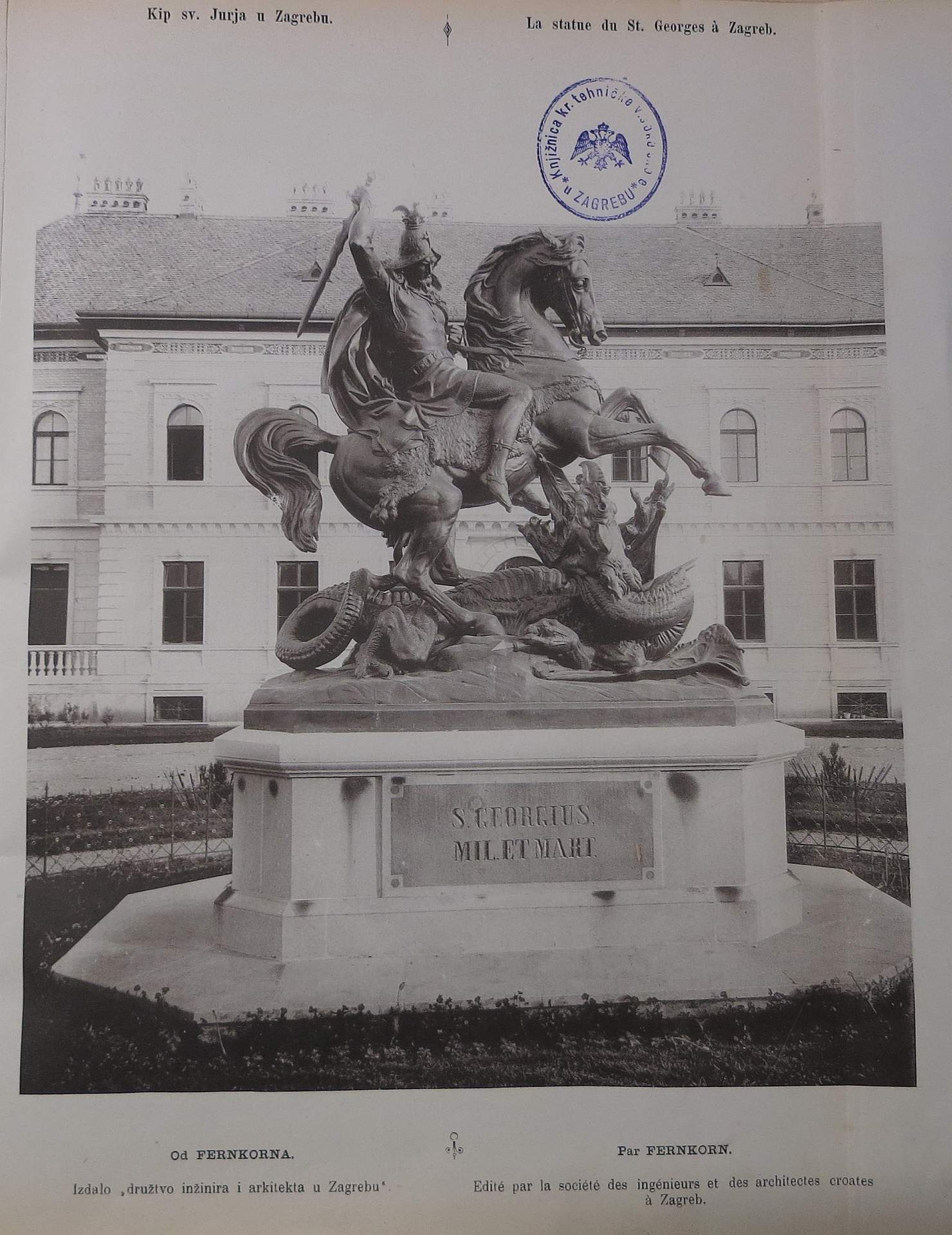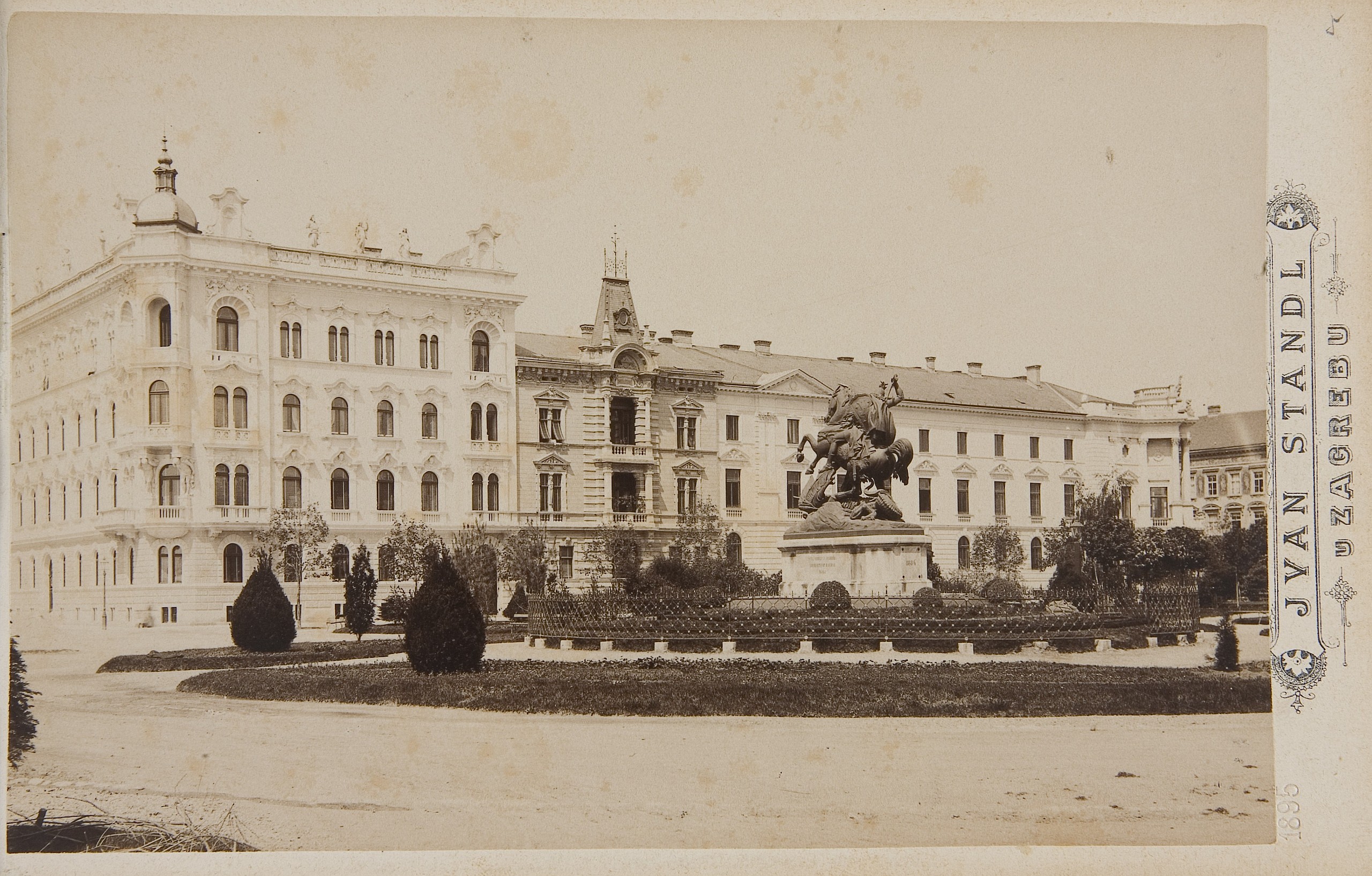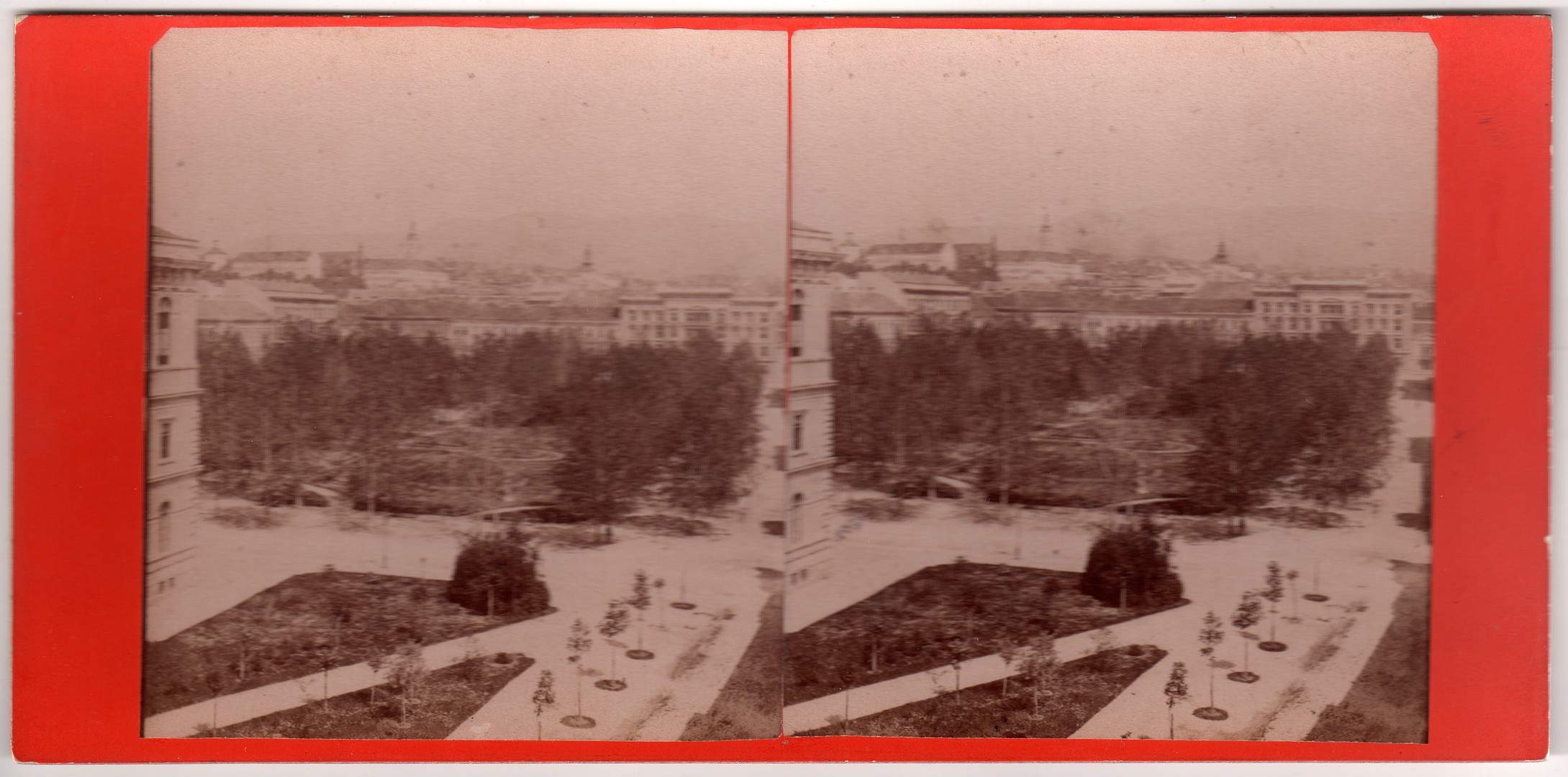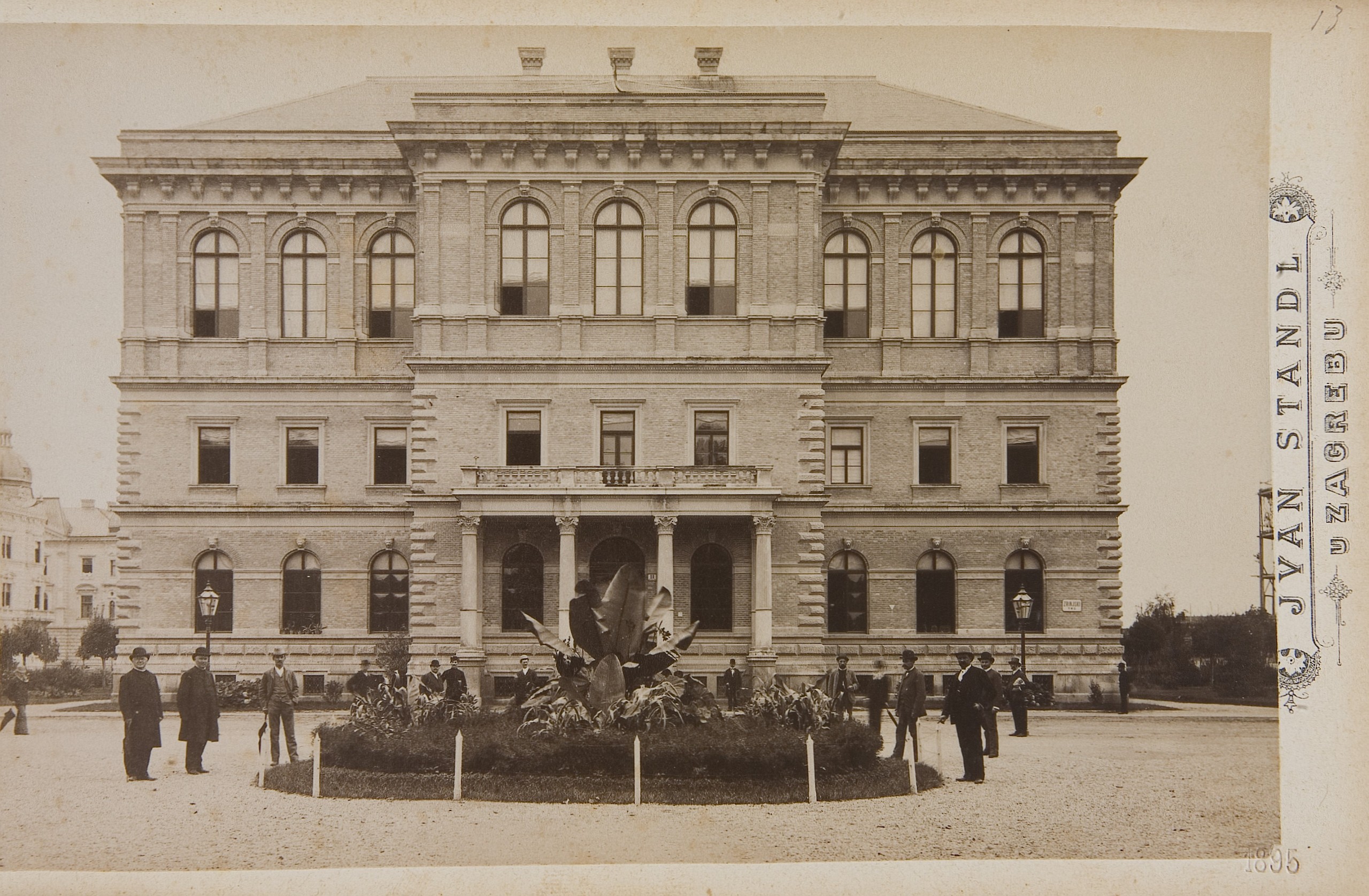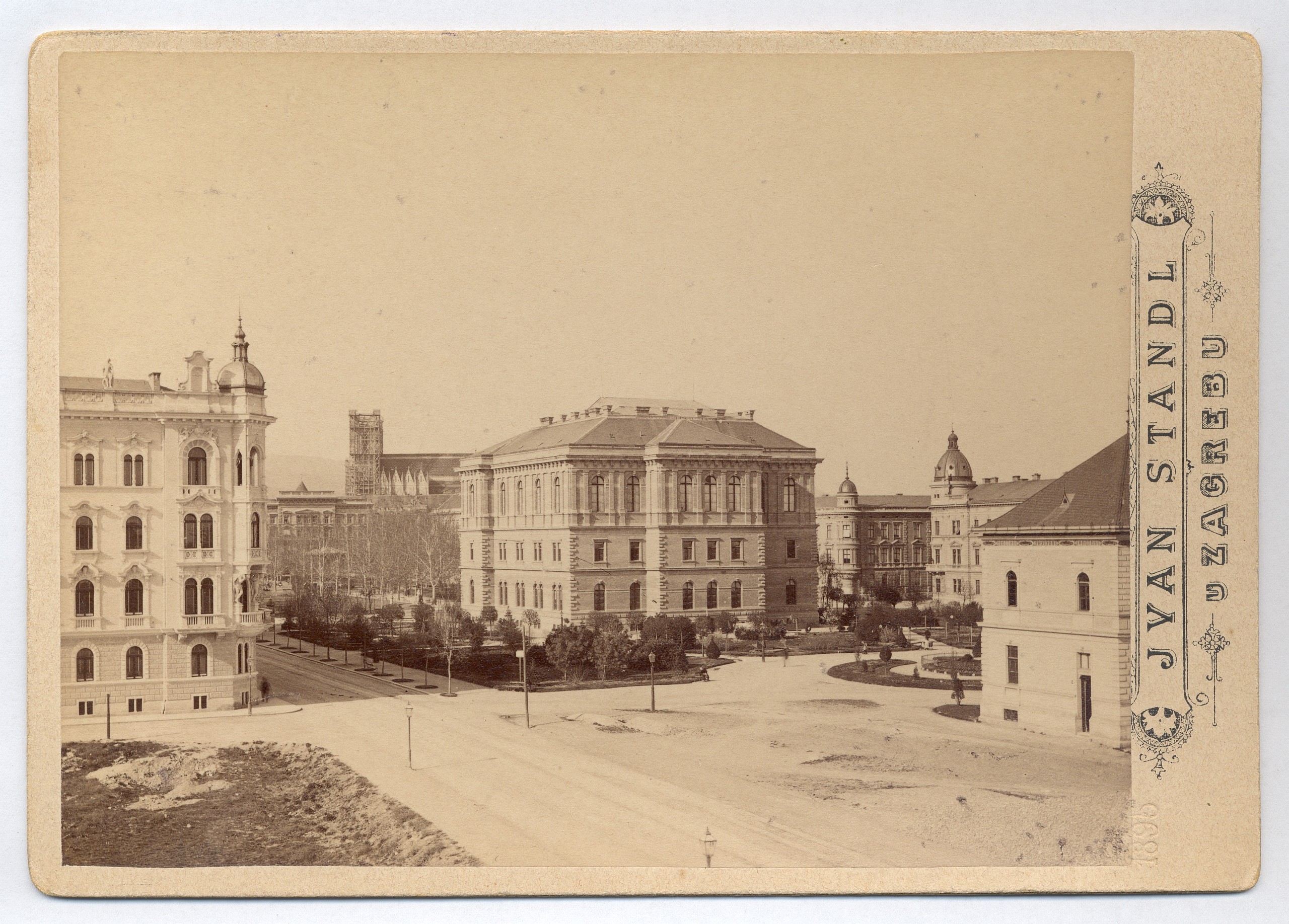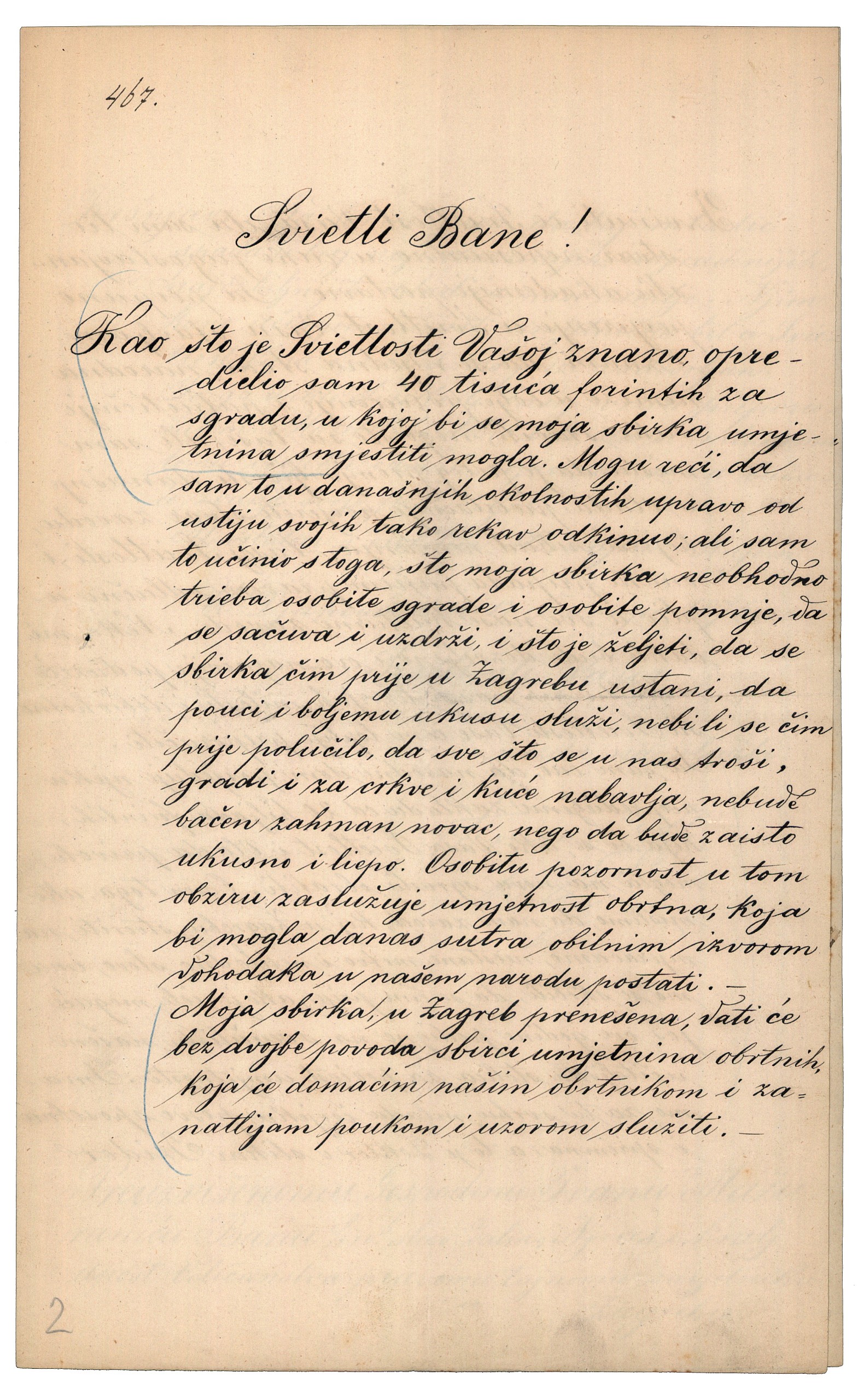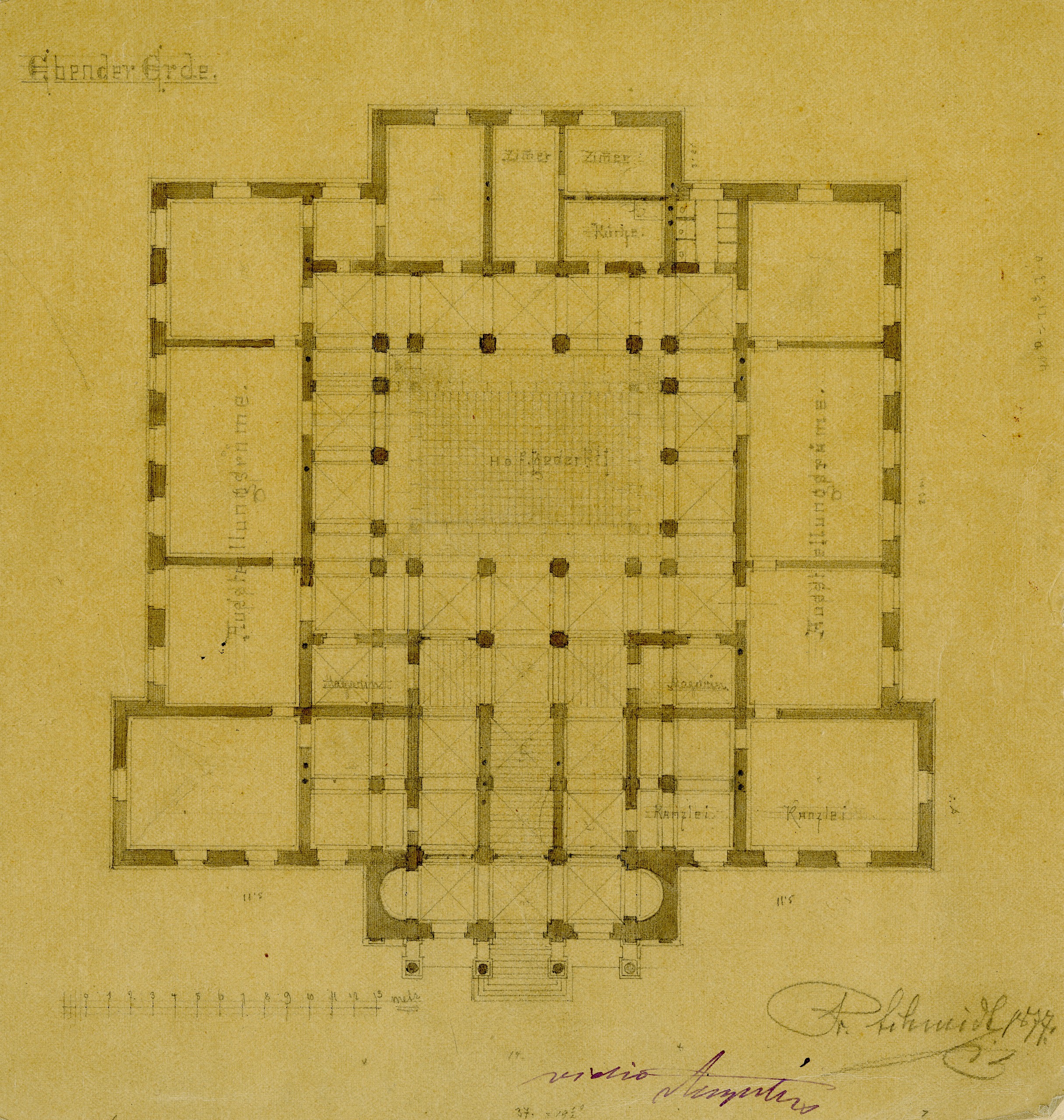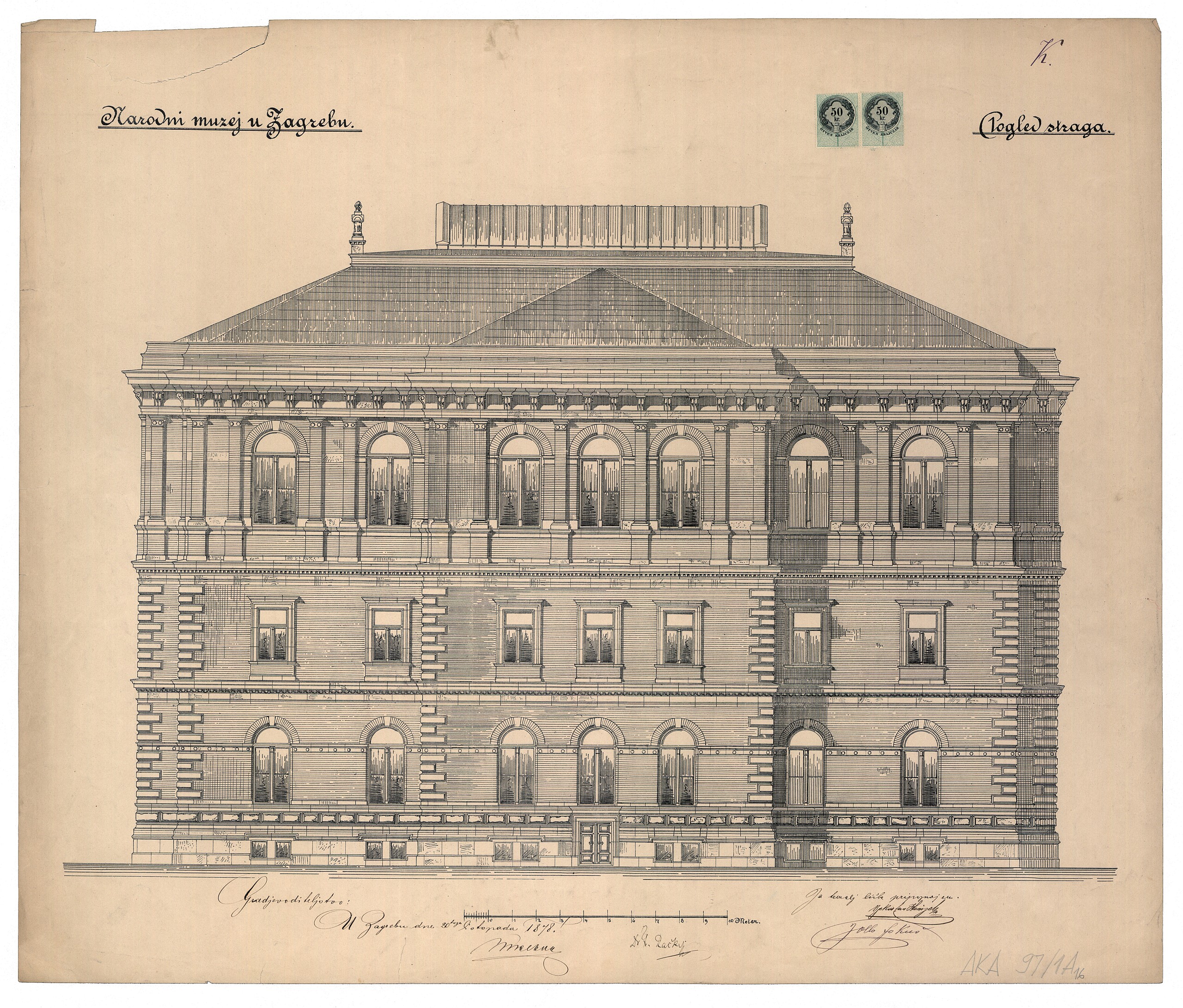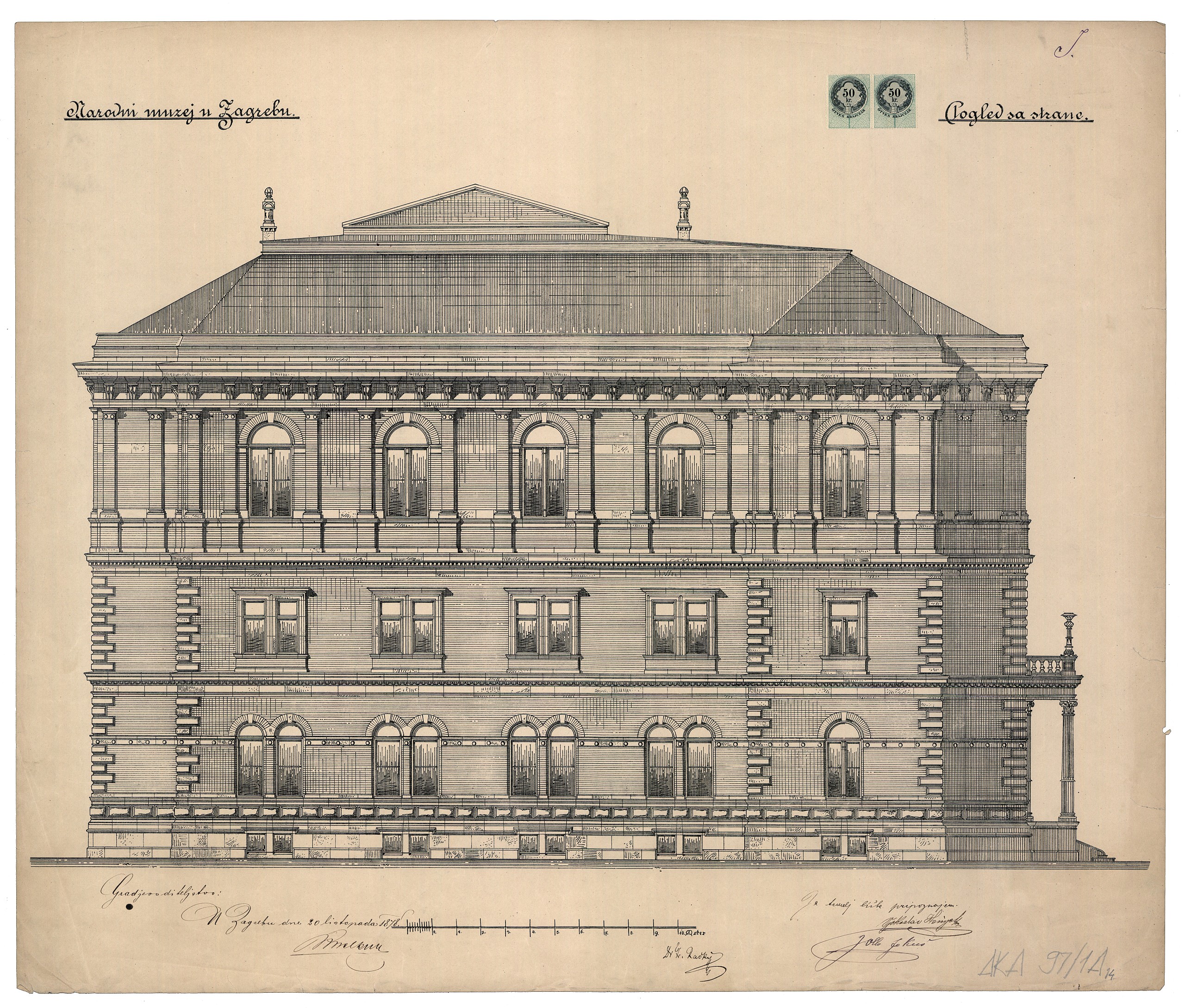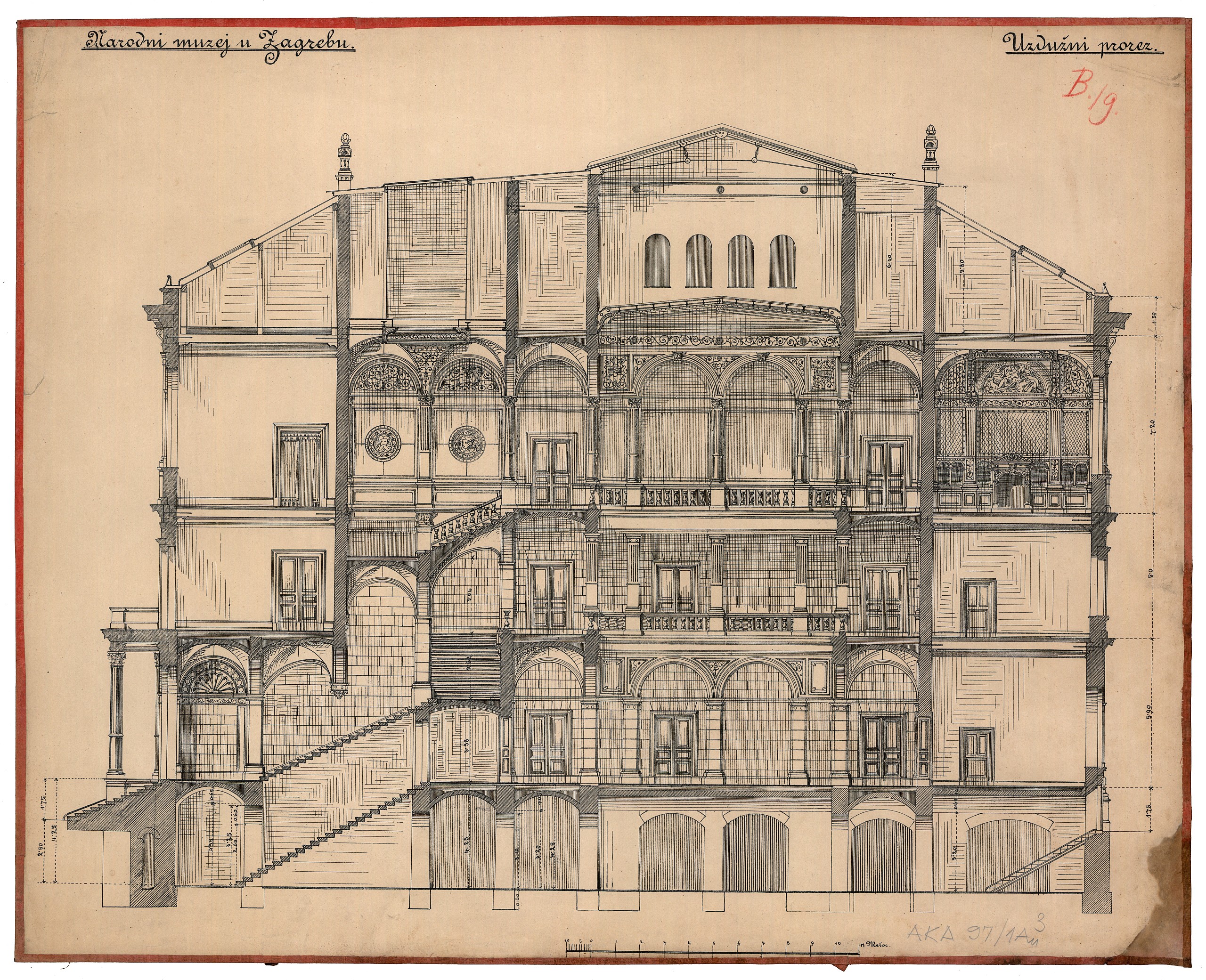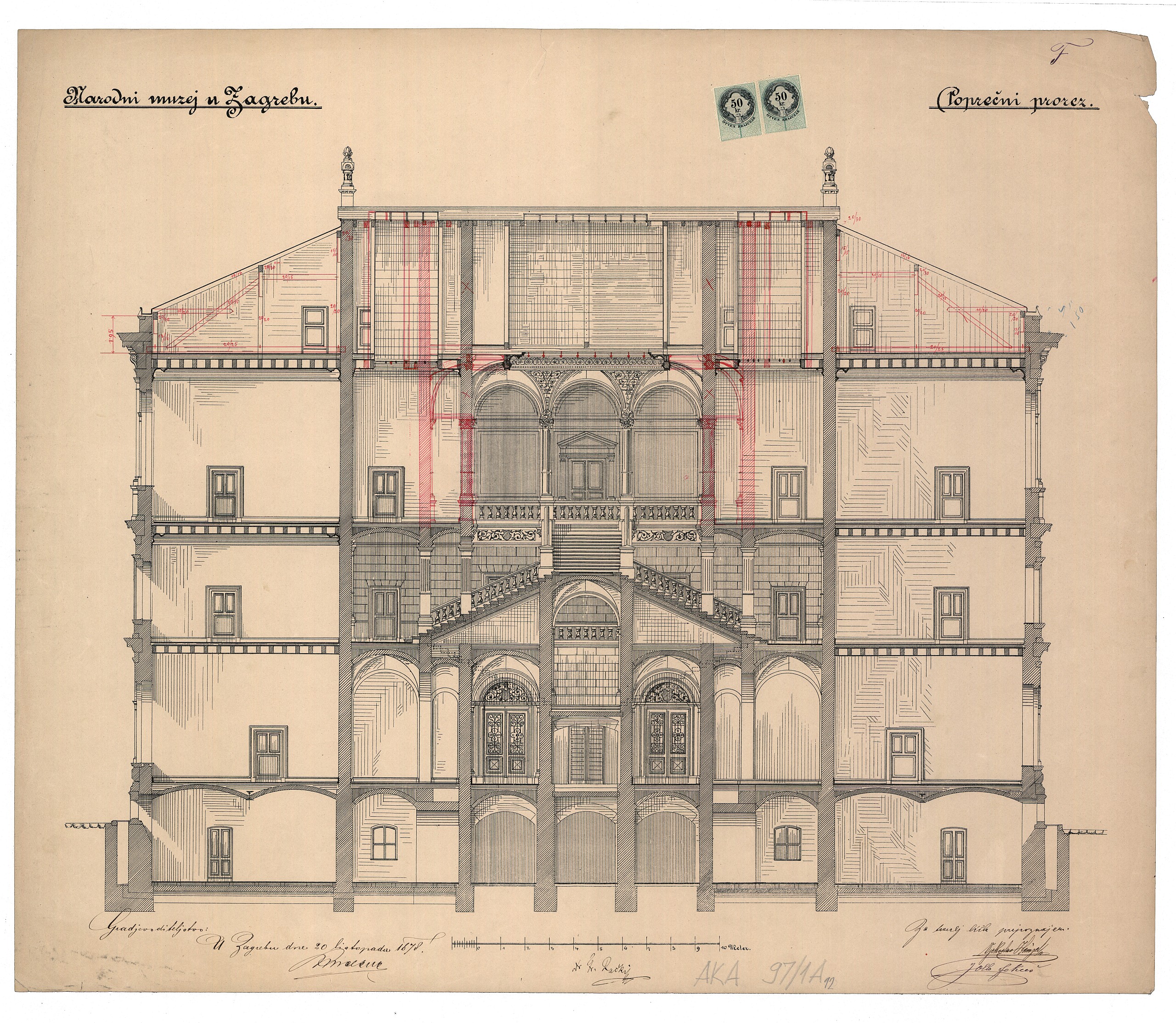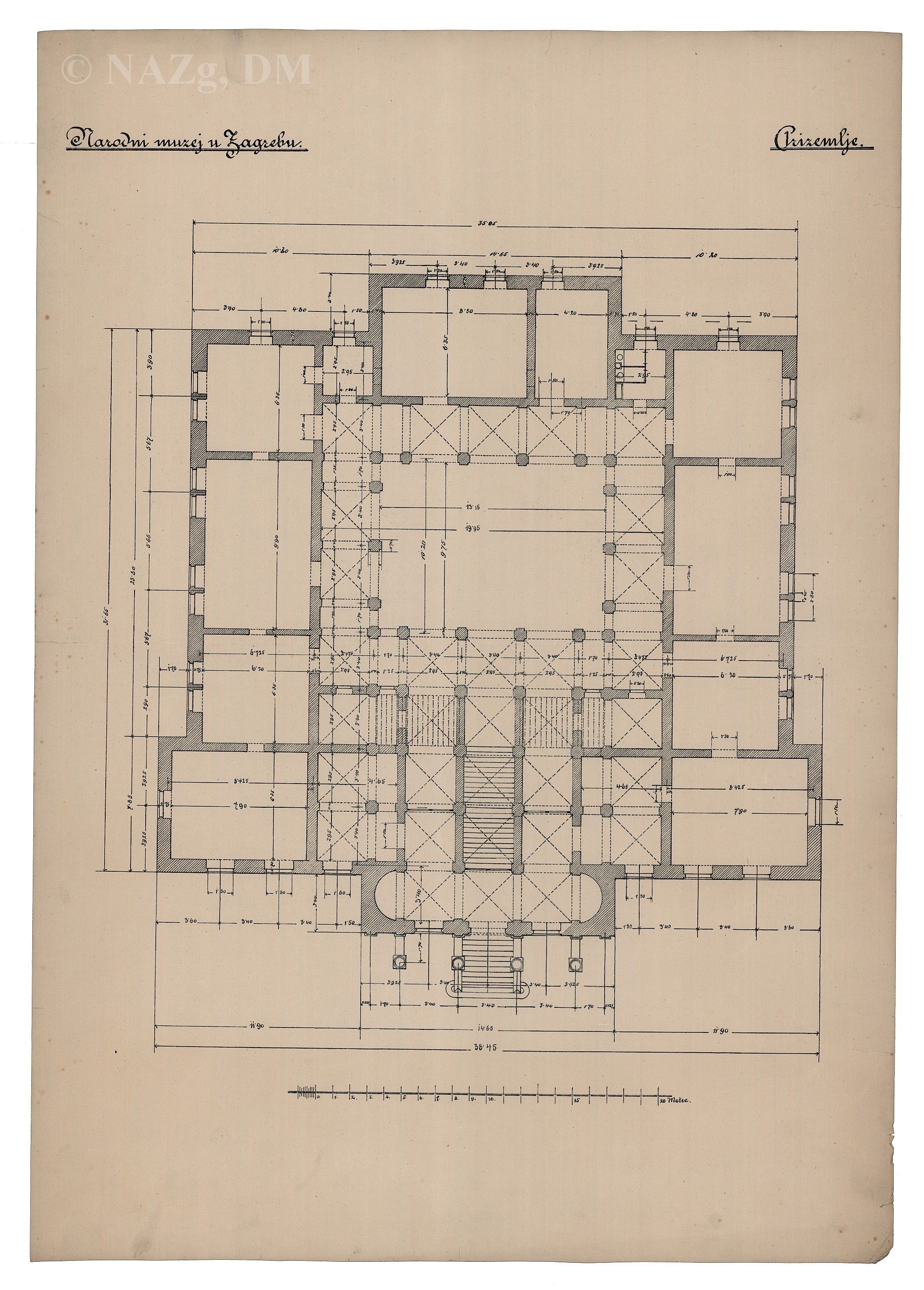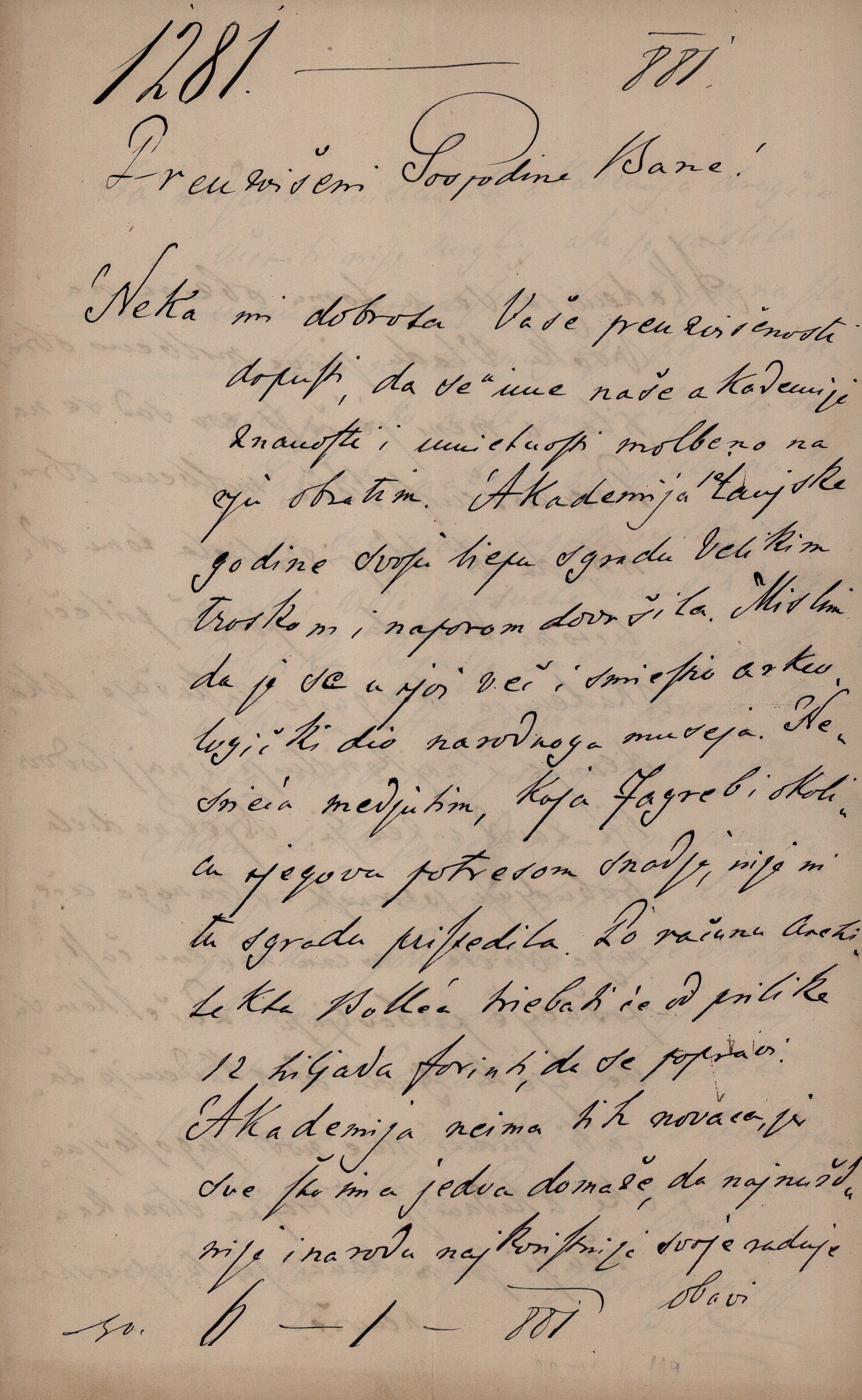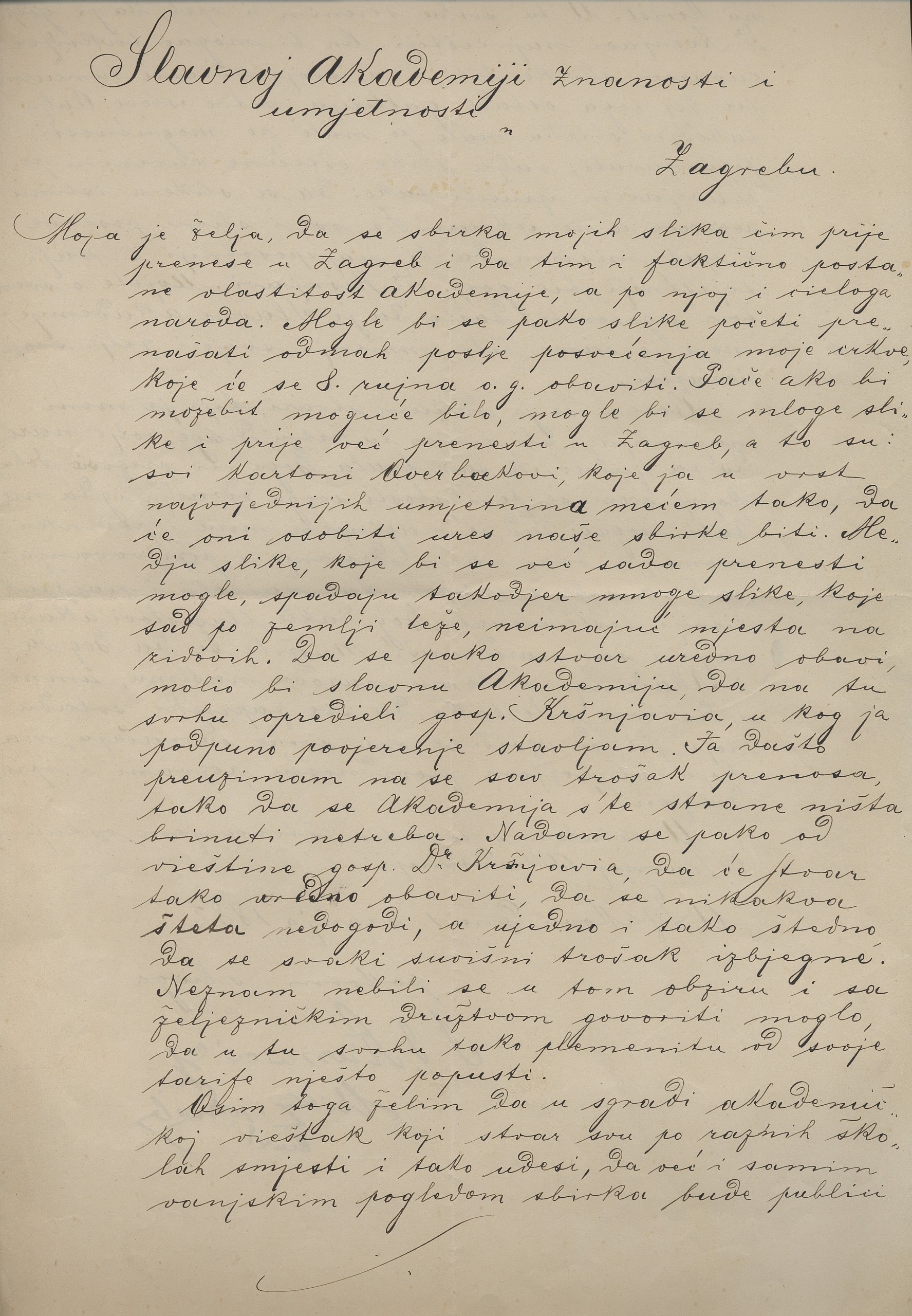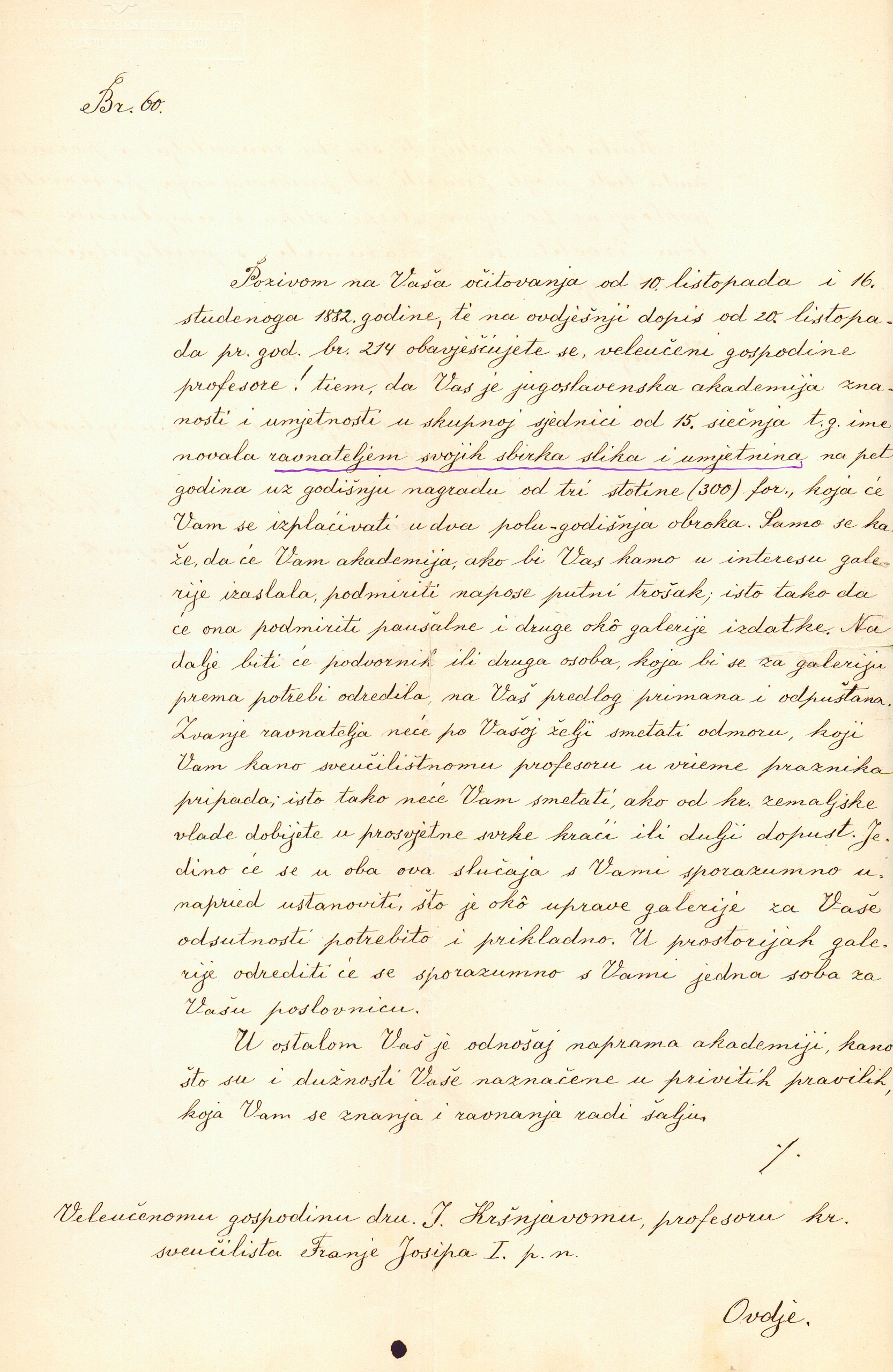Strossmayer’s interest and care for works of art is attested to at the very start of his appointment as Bishop of Đakovo in the 1850s. He organized the restoration of the artworks on site, along with acquiring new ones, an activity he would pursue with ever greater intensity over the following decade. His acquisition of artworks at first resulted from his wish to decorate the Bishop’s palace, but soon grew into the much more ambitious task of breathing life into the mature decision to “provide his people with a museum of paintings, which would be their education and inspiration, enriching their hearts and perfecting their already inherent taste in art”. During the next decade, Strossmayer acquired over one hundred works of art.
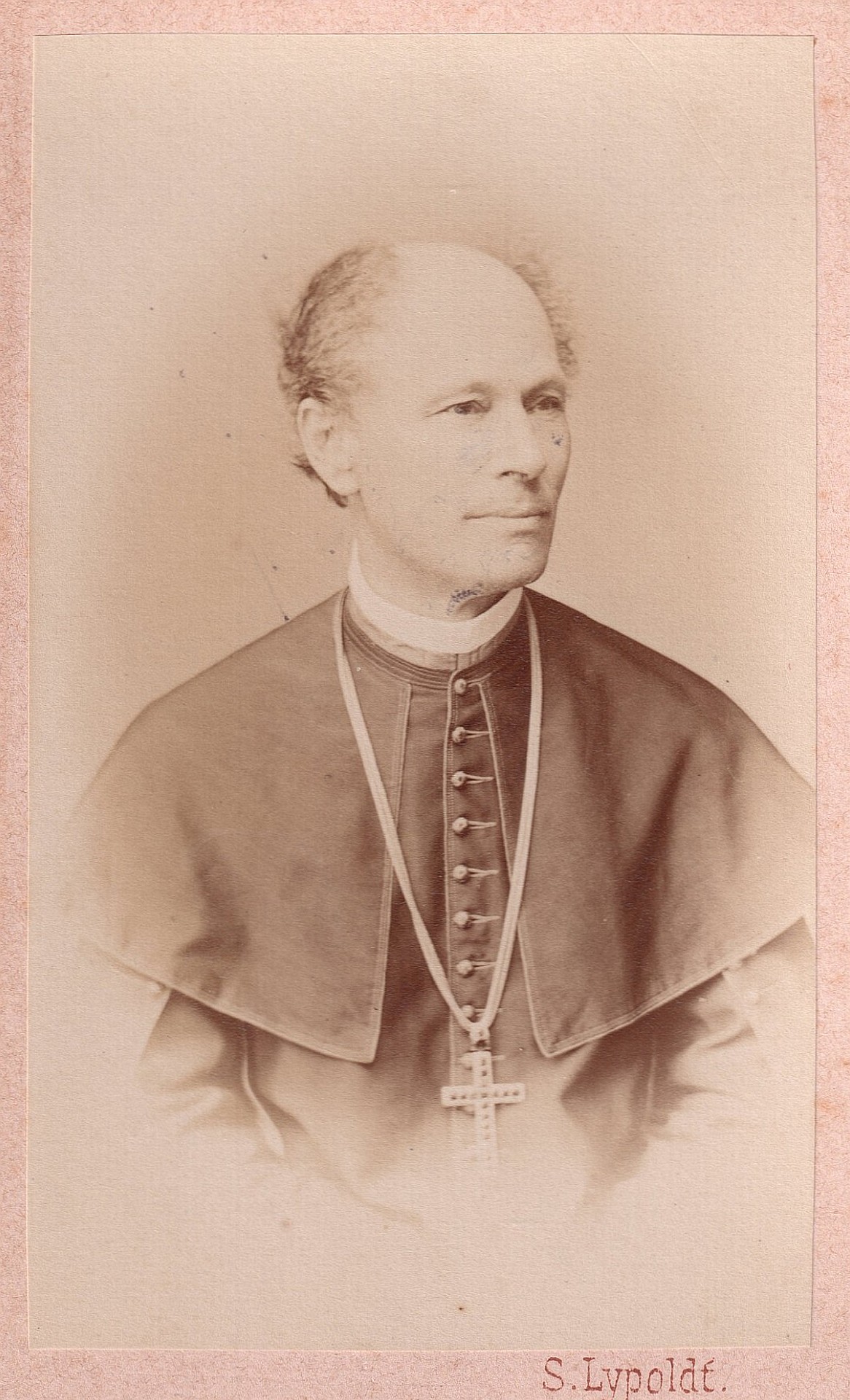
Announcing two years in advance that the Academy would inherit “all his paintings and other artworks”, Strossmayer sent a deed of donation with a letter on 2nd October 1868 proclaiming that “all paintings and artworks that he owns and will come to own be bequeathed to the Yugoslav Academy upon his death”.
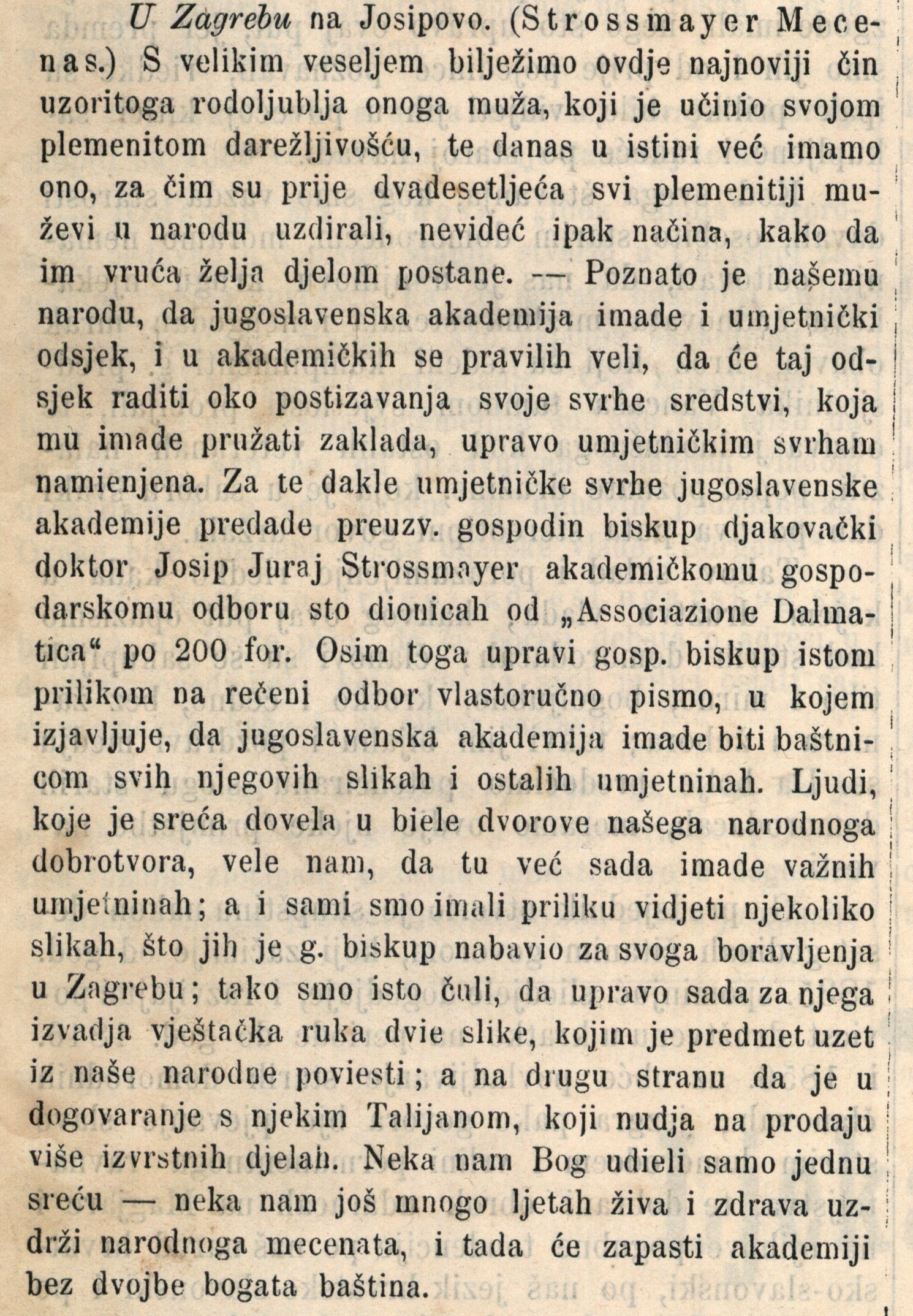
[…] Our people are aware that the Yugoslav Academy has an art department, and according to the Academy’s rules, that department will work on acquiring funds that will enable it to function as a proper foundation concerned with art. For these artistic purposes of the Yugoslav Academy, the esteemed Bishop of Đakovo, doctor Josip Juraj Strossmayer, gave the Academy’s financial council one hundred bonds of “Associazione Dalmatica”, each worth 200 forints. Furthermore, Mr. Strossmayer also sent a hand-written letter on the same occasion in which he declared that the Yugoslav Academy would be the heiress of all his paintings and other artworks. […](in: “Strossmayer Mecenas”, Pozor, 20th March 1866)
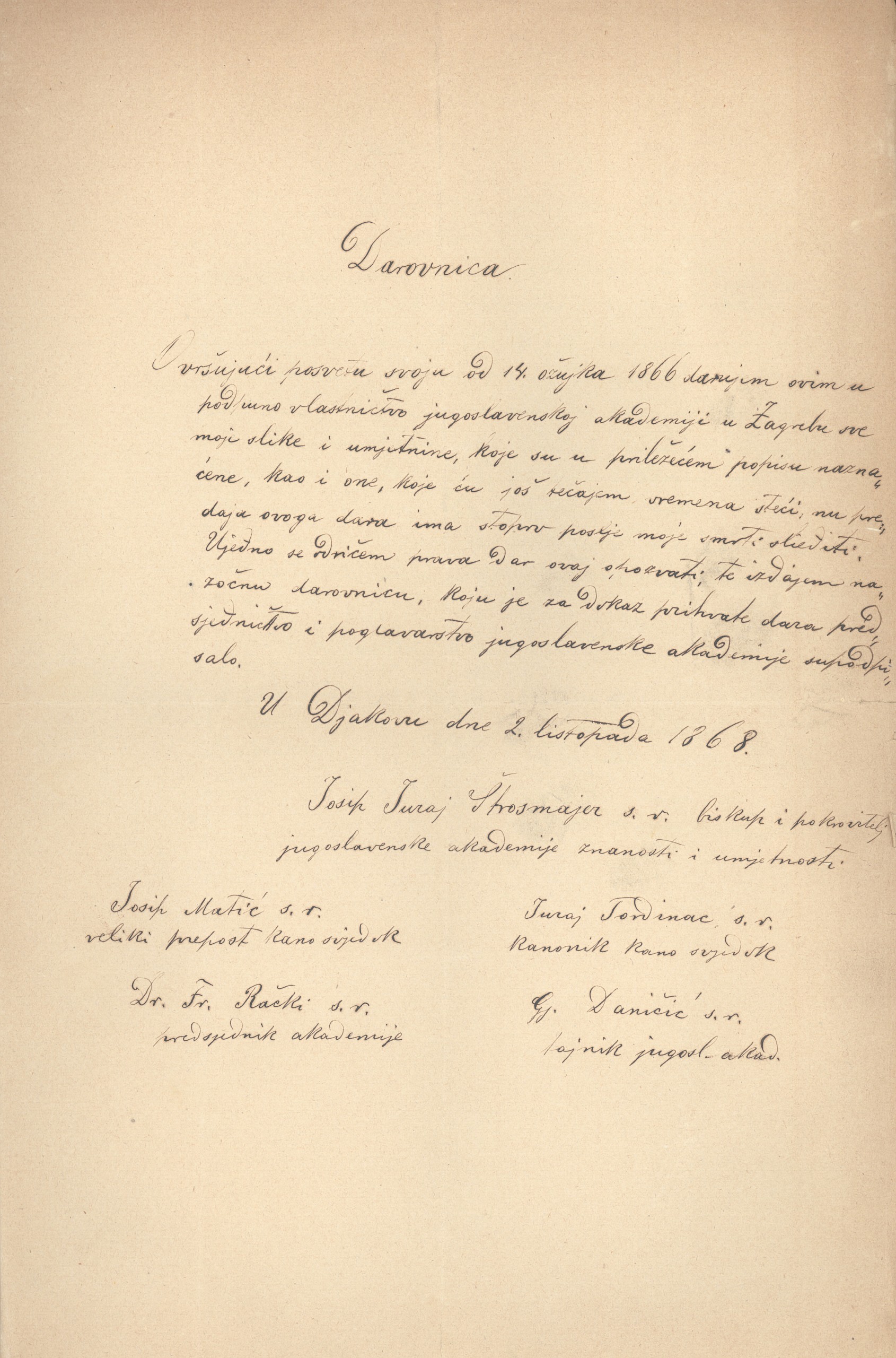
Fulfilling my oath from 14th March 1866, with this I bequeath to the Yugoslav Academy in Zagreb complete possession all my paintings and artworks that are here listed, as well as those that I will come to acquire over time. This gift should be passed on upon my death. At the same time, I relinquish all rights to revoke this gift; and issue this here deed of donation, signed by the presidency and administration of the Yugoslav Academy as evidence of its acceptance.
In Đakovo on 2nd October 1868.
Josip Juraj Strosmajer m. p. bishop and patron of the Yugoslav Academy of Sciences and Arts
[signatories] Josip Matić m. p. provost, as witness; Juraj Tordinac m. p. canon, as witness; Dr. Fr. Rački m. p. president of the Academy; Gj. Daničić m. p. Academy secretary(transcript of J. J. Strossmayer’s deed of donation, 2nd October 1868)
After visiting the Archaeological department of the National Museum in early July 1874, which was then, just like the Academy itself, located in the National Home Palace on Opatička Street 18, the Bishop expressed his grievance over the fact that there was no special location that could house a painting gallery. On this occasion, he requested that one be built as an additional floor of the National Home Palace as soon as possible, a project he would finance himself, and in which he would transfer his collection upon completion.
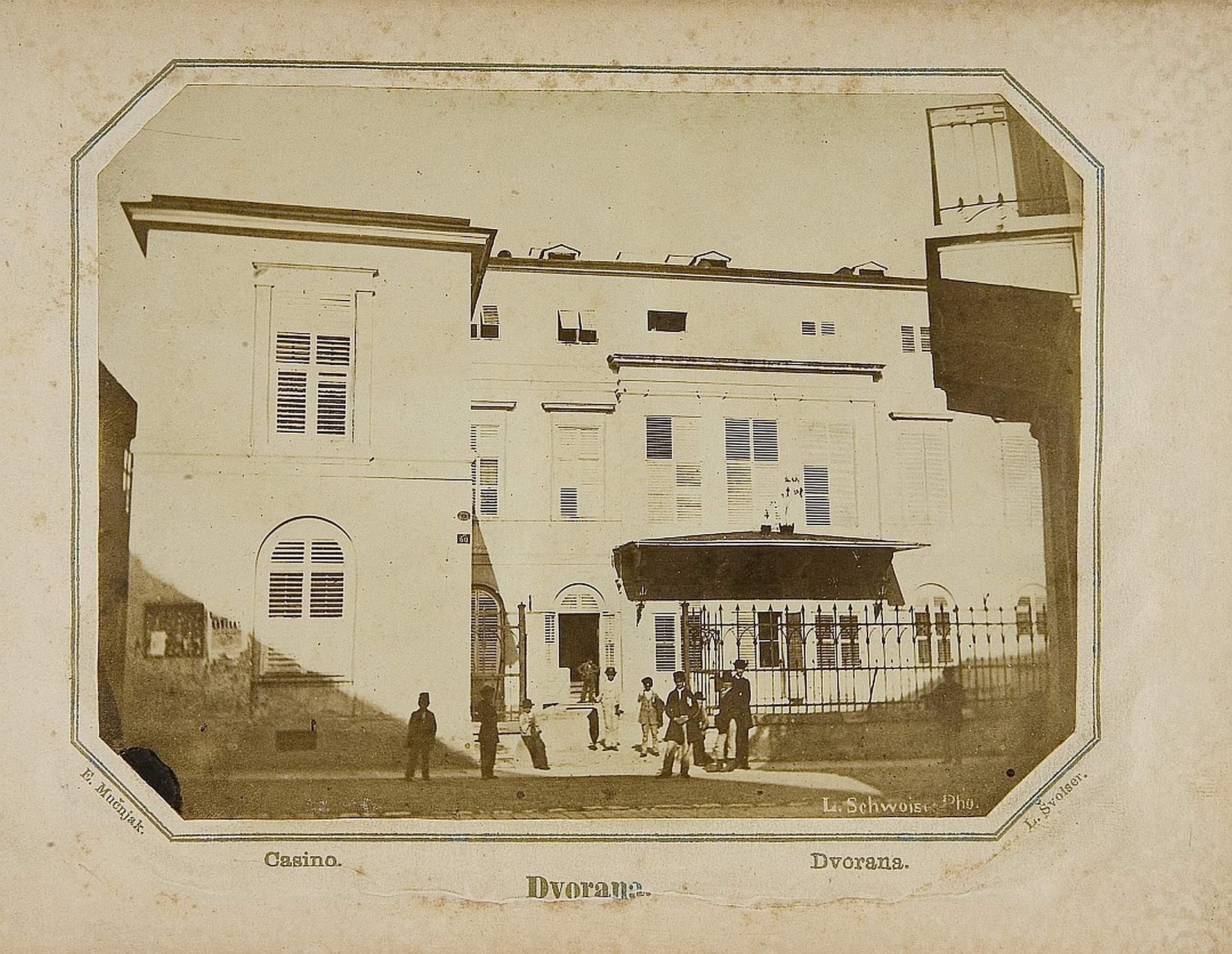
Strossmayer modified his original bequest of artworks to the Academy with a deed of donation on 25th March 1875, in which he expresses the wish that the “collection be immediately transferred to Zagreb where it will serve not only friends of art and the widening of good taste among the public, but also as support for the university, which cannot exist for long without a chair of art history. A collection of artworks is beneficial not only for classes, but also for higher crafts”. Strossmayer also expressed his hope “that the collection of artworks would instigate new thoughts on art in our nation, such as those incited by the Academy in the area of science”.
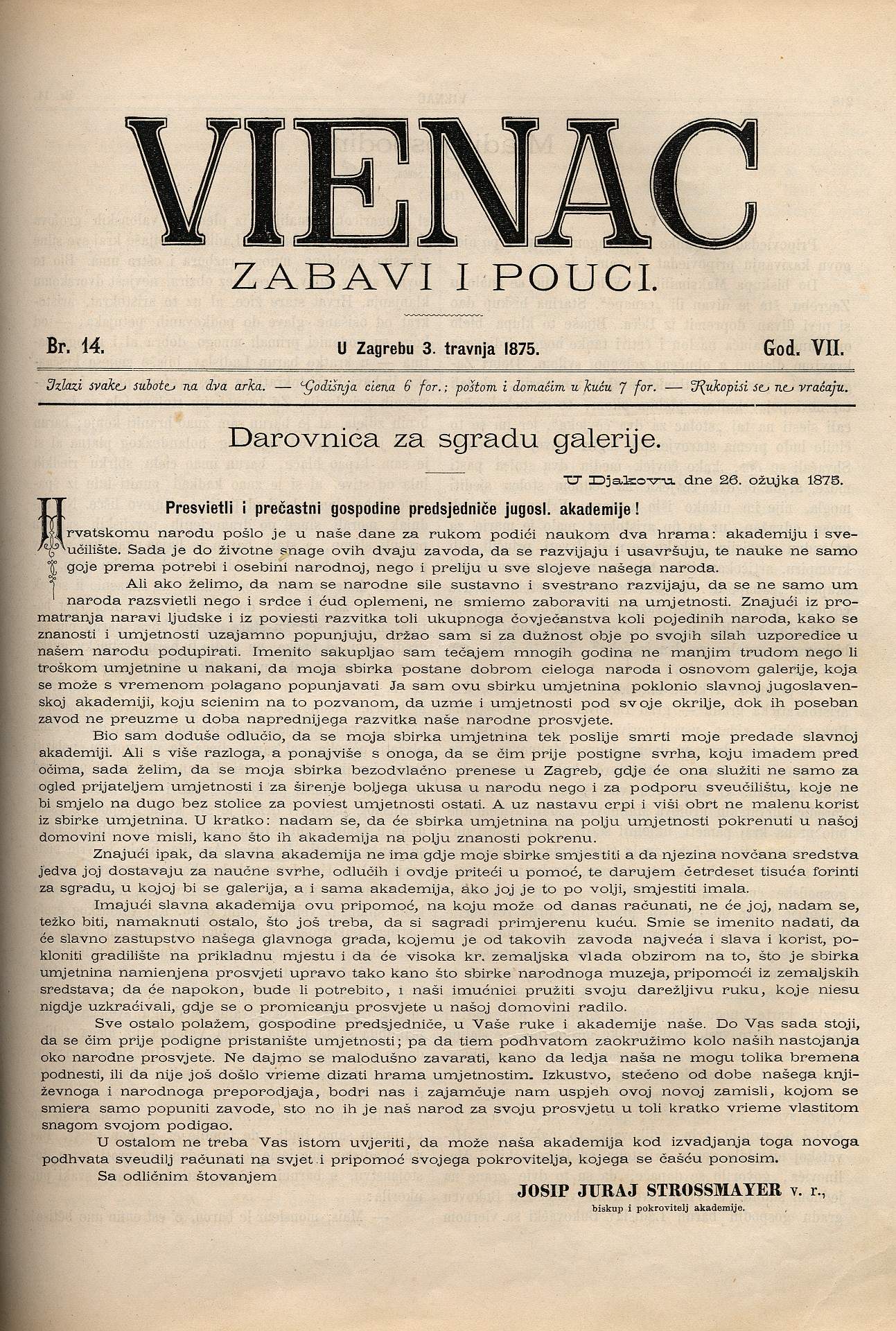
Aware of the fact that the Academy does not have any space it which it could house the collection, nor the sufficient funds, Strossmayer decided to donate 40.000 forints for the construction of an edifice which could house the Gallery, as well as the Academy itself, “if they accept”, hoping that the City administration, the Royal Provincial Government, and wealthy individuals would contribute to this cause.
Noble Ban!
As Your Excellency is well aware, I have set aside 40 thousand forints for the construction of a building that could house my collection of artworks. I could say that, considering today’s circumstances, this means that I have effectively taken bread off my table; but I did so because my collection requires a particular building with a particular purpose, which could house and protect it, and hopefully, allow it to be transferred to Zagreb as soon as possible, so that it would serve to educate and enlighten its people. Also, I would like for all the funds spent in general on the construction of churches and houses not to be wasted, but spent on something truly tasteful and beautiful. In this regard, special attention is required for arts and crafts, which could prove to be a significant source of revenue for our people in the coming times.
My collection, once transferred to Zagreb, will undoubtedly contribute to the creation of a collection of arts and crafts, which will serve as education and inspiration for local craftsmen.
Your Excellency will pardon my application of this query directly to the Yugoslav Academy. I have complete confidence in Your Excellency and know that an issue that is for the people cannot be placed in better, more dedicated and patriotic hands than are Yours; I only thought, due to the constant transiency of today’s government, it would be more prudent to entrust this issue to an institution that never changes. Your Excellency in any case has every right to intervene in all our cultural institutions. Let me, therefore, be allowed to warmly recommend this newest enterprise in our cultural endeavors to the grace and benevolence of Your Excellency.
I have heard that the National Home Palace is in possession of an unallocated foundation of 20 thousand forints which, if Your Excellency and the Government were to agree, could be used for the new building. Furthermore, if we wish that the institution that we plan to create in Zagreb not become just a dead letter, we must ensure that a chair of art history be founded at the university soon, this year if possible. For this position we already have a fine young man, completely ready and capable; doctor and painter Izidor Kršnjavi. I am confident that this young man belongs to the most highly educated, talented, and serious men in our country. With him as the teacher of art history, Your Excellency and our people will be more than pleased.
I recommend him wholeheartedly to Your Excellency. It would perhaps be good to let the young man know promptly, so that he can start preparing for his future position.
In all else I remain Yours with highest regards
In Đakovo on 17th April 1875
Always at Your Excellency’s service, Bishop Strossmayer
To the esteemed Mr. Ivan Mažuranić, Ban of Croatia, Slavonia. and Dalmatia; secretary to His Imperial and Royal Majesty in Zagreb.
Delivered on 21st April 1875 1023/Pr.(transcript of Strossmayer’s letter to Ban Mažuranić, 17th April 1875)
The construction of the Palace was, therefore, part of a more comprehensive plan to establish a network of cultural and historical institutions, and its fate was closely tied to the founding of the university chair of art history, as well as solving of the issue of where to house the Academy itself. The initial outlines of this enterprise were drawn during the winter of 1873/74 in Rome, within the inner circle of painter Ferd Quiquerez and three promising young intellectuals, Ladislav Mrazović, Rikard Jorgovanić, and Dušan Kotur, as well as painter and first Croatian educated art historian, Izidor Kršnjavi, who had by then been living abroad for quite some time and had shown no interest in the cultural circumstances of his homeland. By all accounts, the versatile Mrazović, who was among the first in Croatia to write about issues of art and arts and crafts, contributed greatly to the outlines of this plan. Convinced that the opening of a gallery in Zagreb would be a guarantee for the founding of a chair of art history, advocating for the position of curator and lecturer to be given to Kršnjavi, and already thinking about the construction of a designated space, on Zrinski Square nonetheless, he was instrumental for Kršnjavi’s return to Zagreb, for convincing the Bishop, with the help of Rački, to transfer his collection to Zagreb promptly, and for establishing the cooperation between Strossmayer and Kršnjavi who had until then known each other only superficially, it seems.
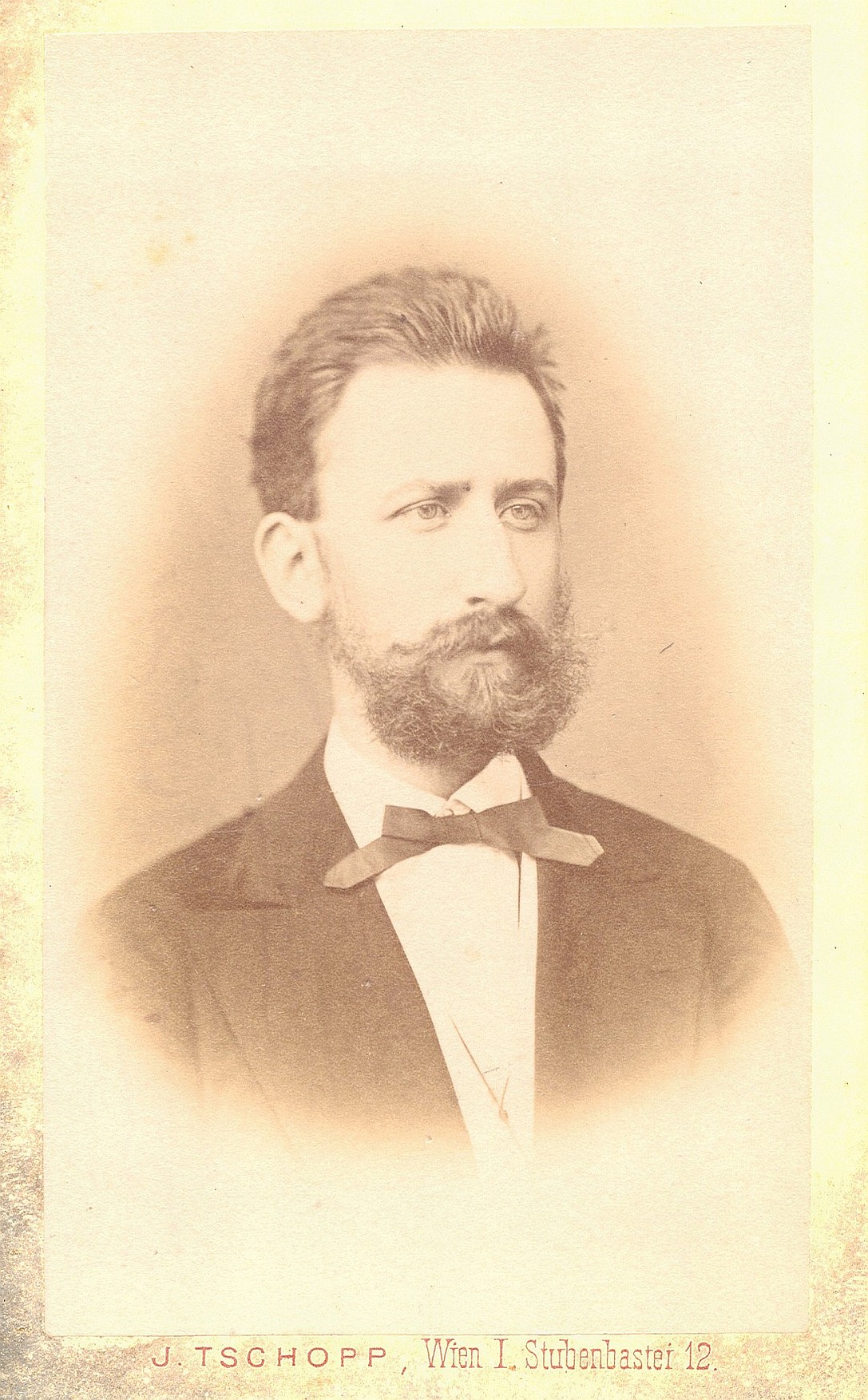
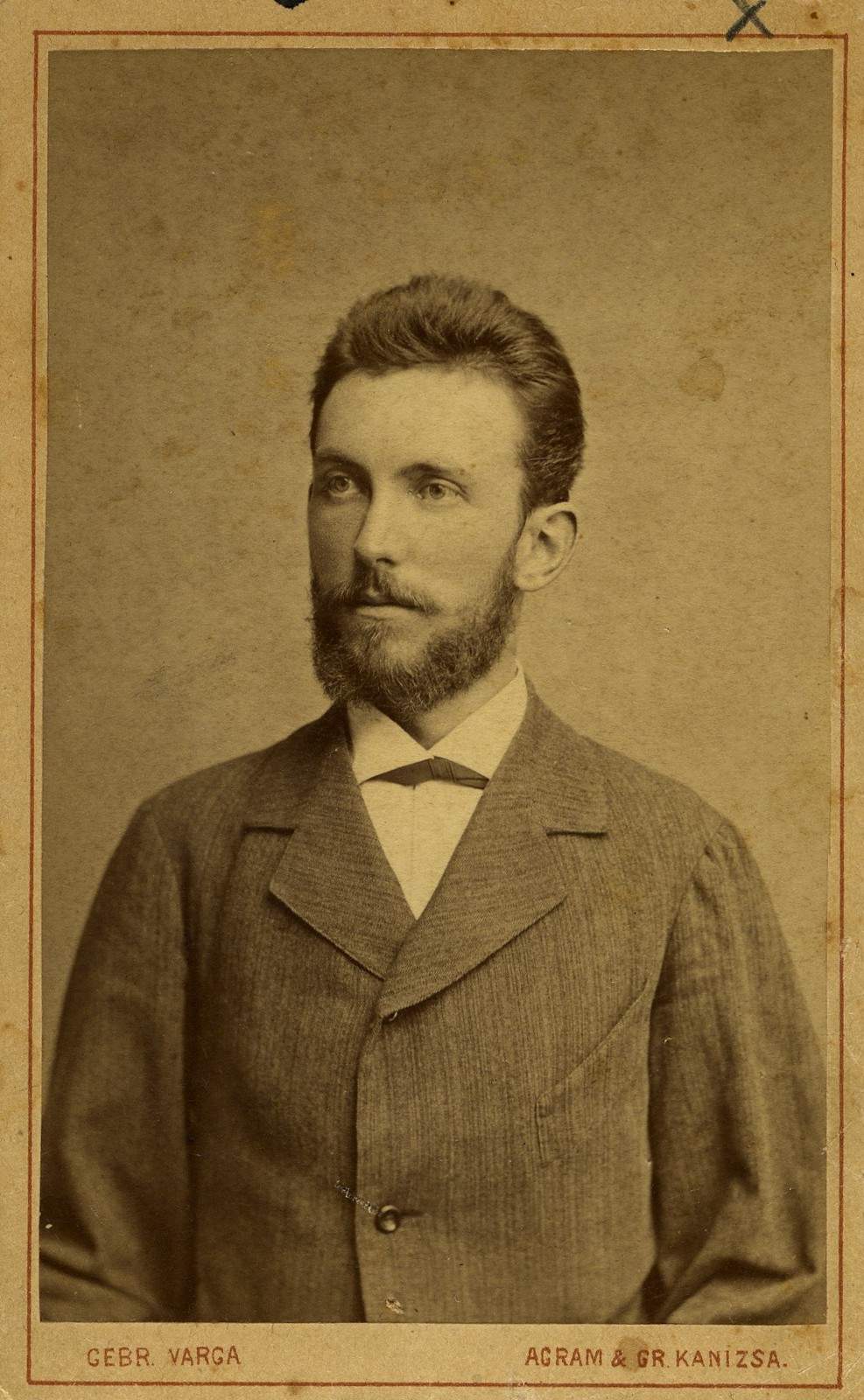
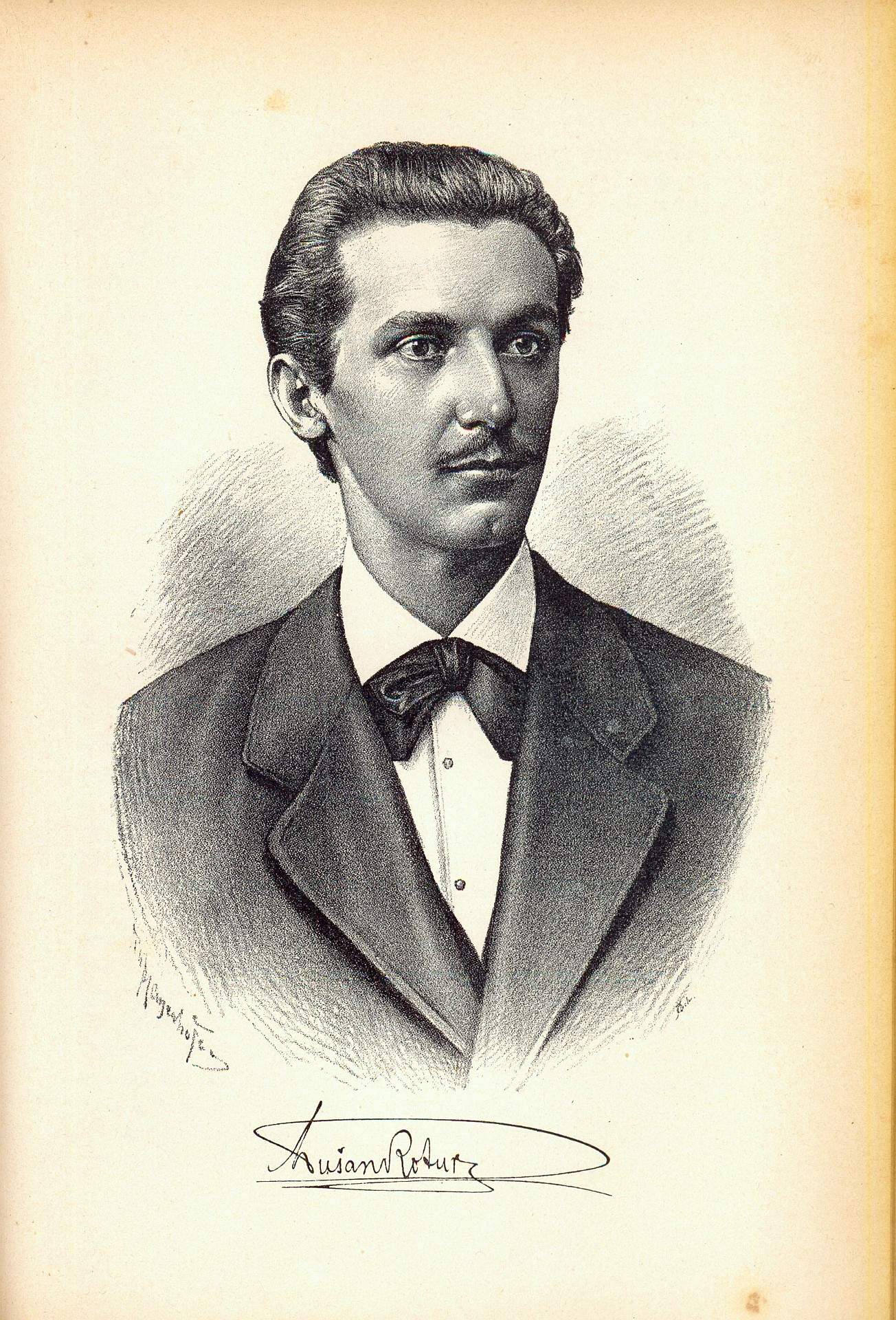
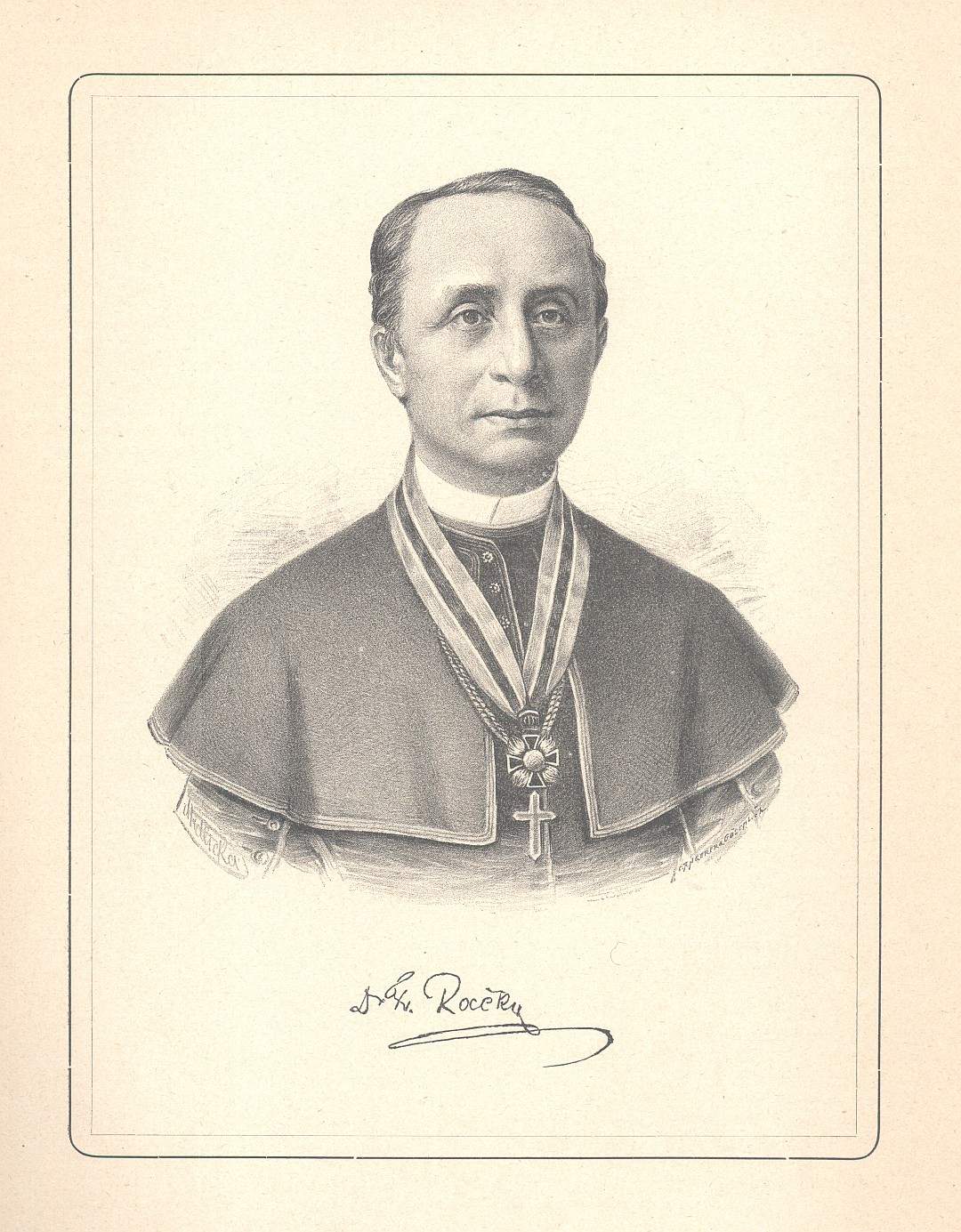
During the intense socializing period of the Bishop and Kršnjavi in the winter of 1874/75 in Rome, Strossmayer wholeheartedly accepted the idea of the simultaneous realization of both outlined and interdependent goals, as well as the double role awarded to Kršnjavi in such a scenario. Finally, after the initial idea of expanding the National Home Palace was rejected because of not being cost effective, it was in Rome that the idea of constructing a brand new building to house the Bishop’s art collection came to fruition.
In April of 1875, at the Academy’s request for a free allocation of land on which such a building can be raised, a committee named ad hoc by the City Council suggested a location on Strossmayer’s promenade. The project design and cost estimate were entrusted to Viennese architect Friedrich von Schmidt, who would complete the assignment as late as October, although the City’s municipal services received his preliminary design in the summer. The design of the main façade and ground floor with a positional plan were published at the beginning of the following year in the first edition of the newspaper Vienac, probably as a form of pressure on the City Council to finally approve construction on the plateau on Grič.
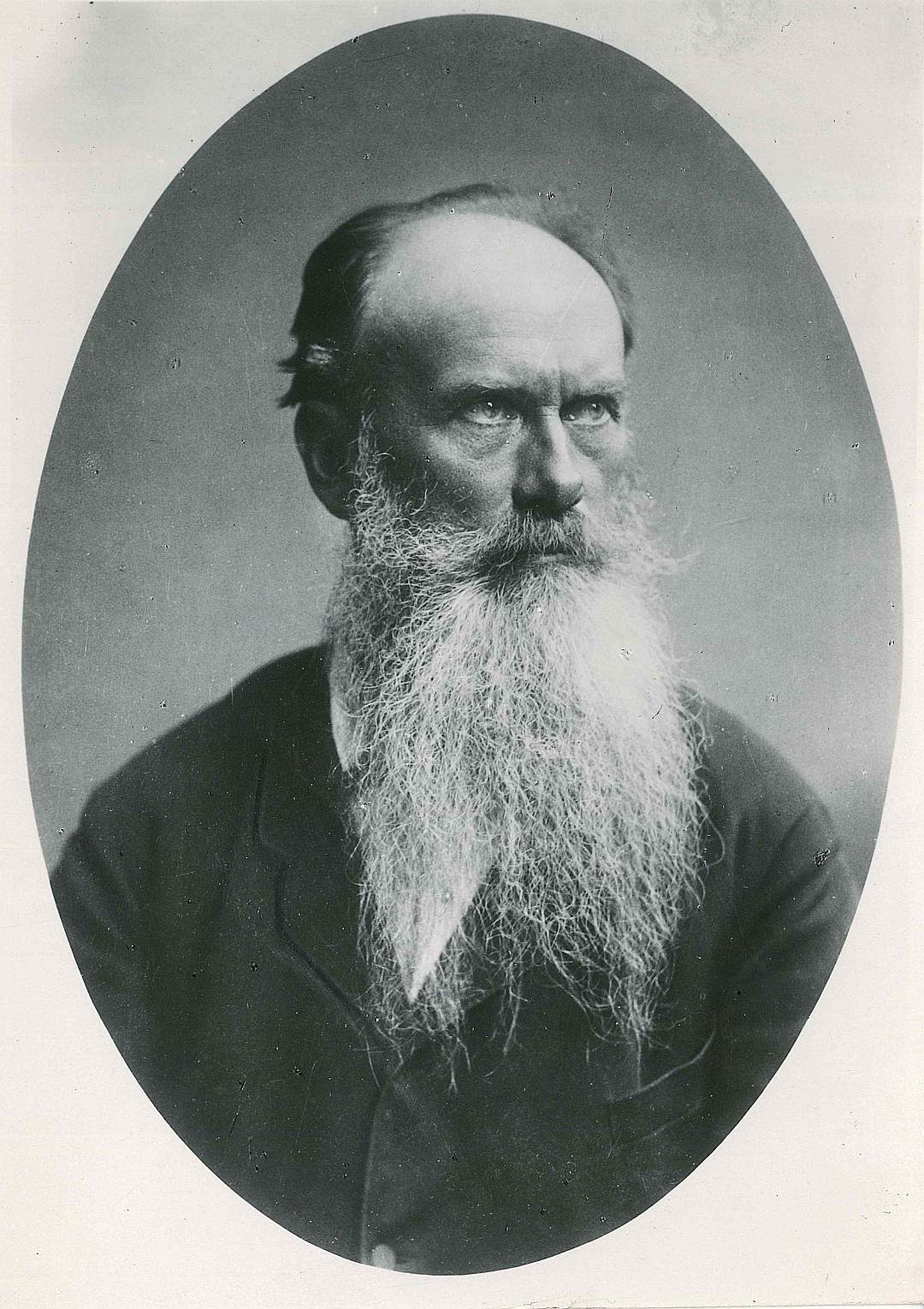


Because of the heated several-month-long public debate over the allocated piece of land, the first suggestion was definitively rejected in April of 1876. Zrinski Square was chosen as a more appropriate location for the construction of the Academy palace. Rački and Kršnjavi accepted the Council’s decision with disappointment. At their suggestion, the Bishop finally reluctantly agreed to it as well.
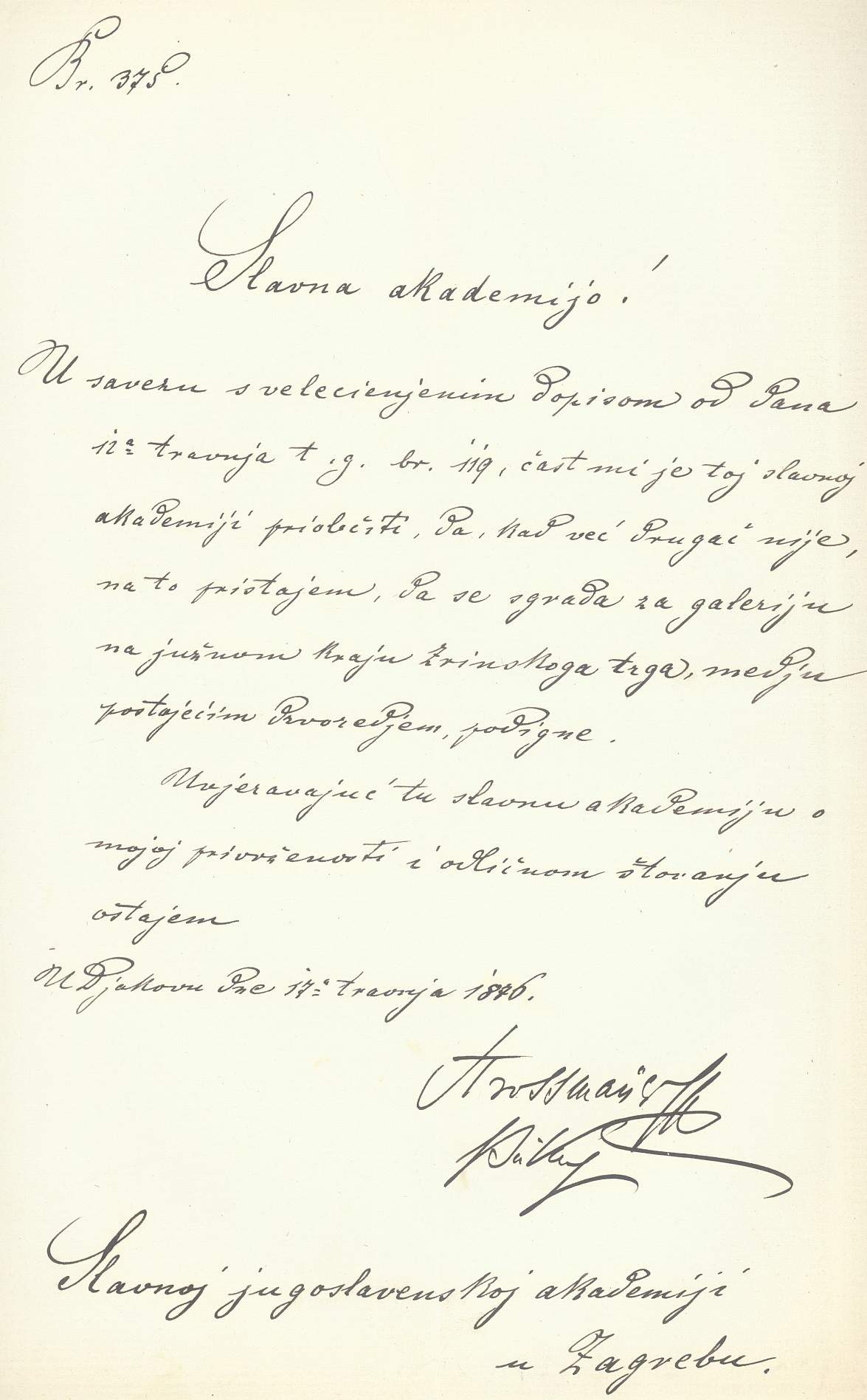
Glorious Academy!
With regard to the highly appreciated letter from 12th April of this year, no. 119, it is my honor to notify the glorious Academy that, as there is no other option, I agree that the building for the gallery be constructed on the south side of Zrinski Square, among the existing tree line. Assuring this glorious Academy of my affection and regard, I remain Yours
In Đakovo on 17th April 1876
Bishop Strossmayer
Glorious Academy of Sciences and Arts in Zagreb.(transcript of Strossmayer’s letter to the Academy from 17th April 1876)
The new location required a new architectural project, which was finished by the beginning of August of the same year. It has been preserved on three pages in the Friedrich Schmidt Foundation in the Vienna Museum, while two ground plans and half of a sketch for the main façade are stored in Zagreb’s Archbishopric Archives. As with the first project, created with the Upper Town location in mind, the ground floor of the building was envisaged as a space for the Academy’s offices and library, while the upper floor was dedicated to the Gallery. The exact location of the palace on the southern side of Zrinski Square had not yet been determined by the completion of the project itself. Its positioning on the very edge of the square, south of the tree line, where the building was finally erected, required additional funds because some private pieces of land also had to be purchased. By the end of 1876, the City Council reached a decision that the building be erected at that very spot, but this was not final until May of the following year, when negotiations with the four private land owners were finally finished, and the City Government secured a loan to finance the land purchase. Schmidt, however, advocated for the placement of the building within the park itself, in the middle of its southern part, an idea shared by Kršnjavi. The August 1876 project estimated that the building costs would amount to approximately 120 000 forints, which was a huge expense that required the help of the Provincial Government. By the end of the year, the Parliament finally decided to grant the long-awaited government funds, in the generous amount of 80 000 forints. However, this grant was given under the condition that the building on Opatička Street be given over to judicial institutions, and the Archaeological Department of the National Museum be squeezed into the space of the future Academy Palace on Zrinski Square. This condition called for a completely new architectural project, whose outline was finished quickly, and authorized by the Provincial Government as early as February 1877. This new solution included the addition of another floor: the Gallery would be placed on the top floor, the Academy’s offices and library on the first floor, while the entire ground floor would be allocated to the Archaeological Department of the National Museum.
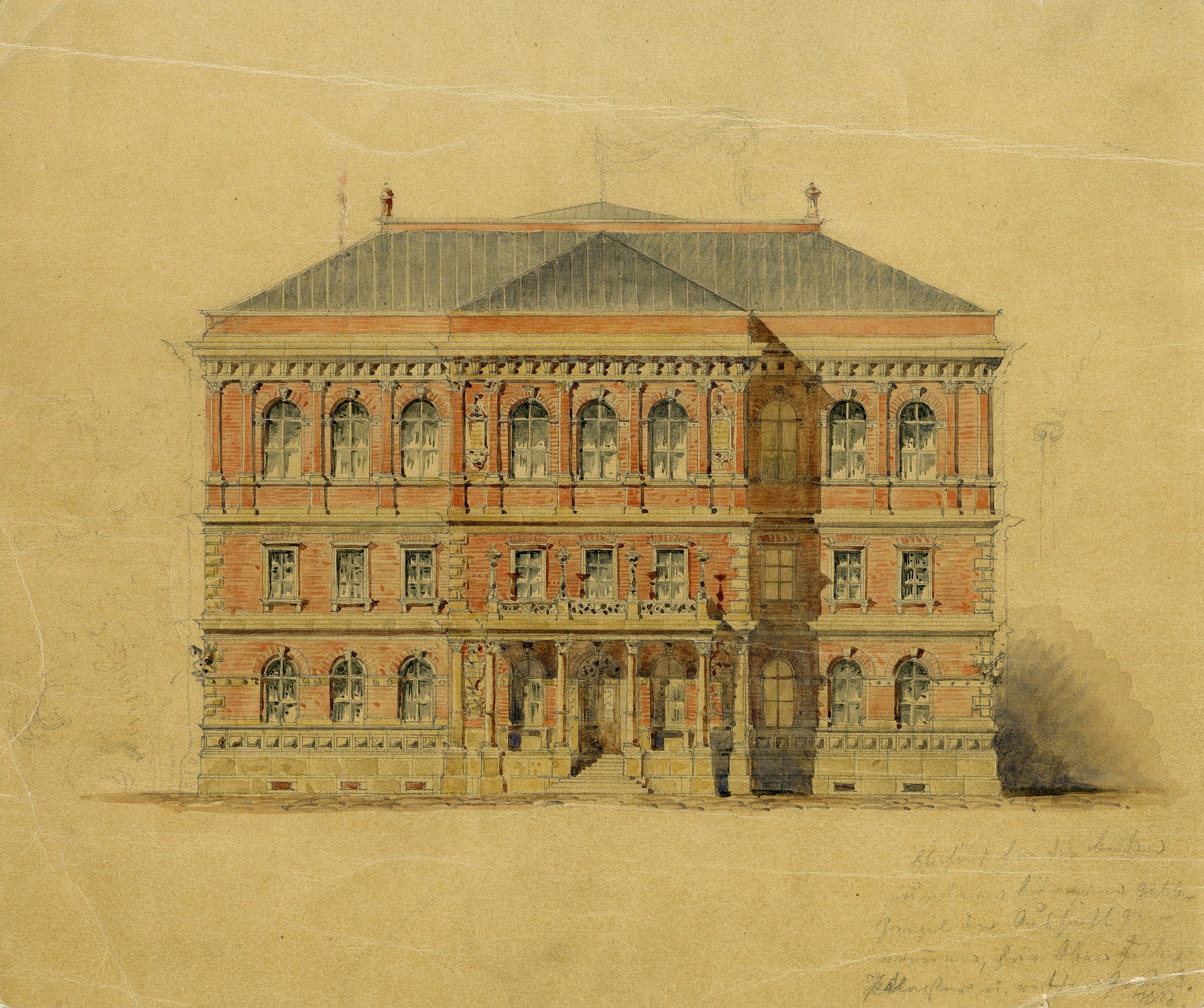
City engineer Rupert Melkus drew up a list of expenses on the basis of the February 1877 project, which was then sent to Schmidt for inspection, along with an appeal to include additional modifications according to the Academy’s objections, which would guarantee the least costly version without any loss of soundness and aesthetic quality to the building. The new version of the project was under way and finished by the end of May. This final version was the one used for the construction of the Academy Palace.
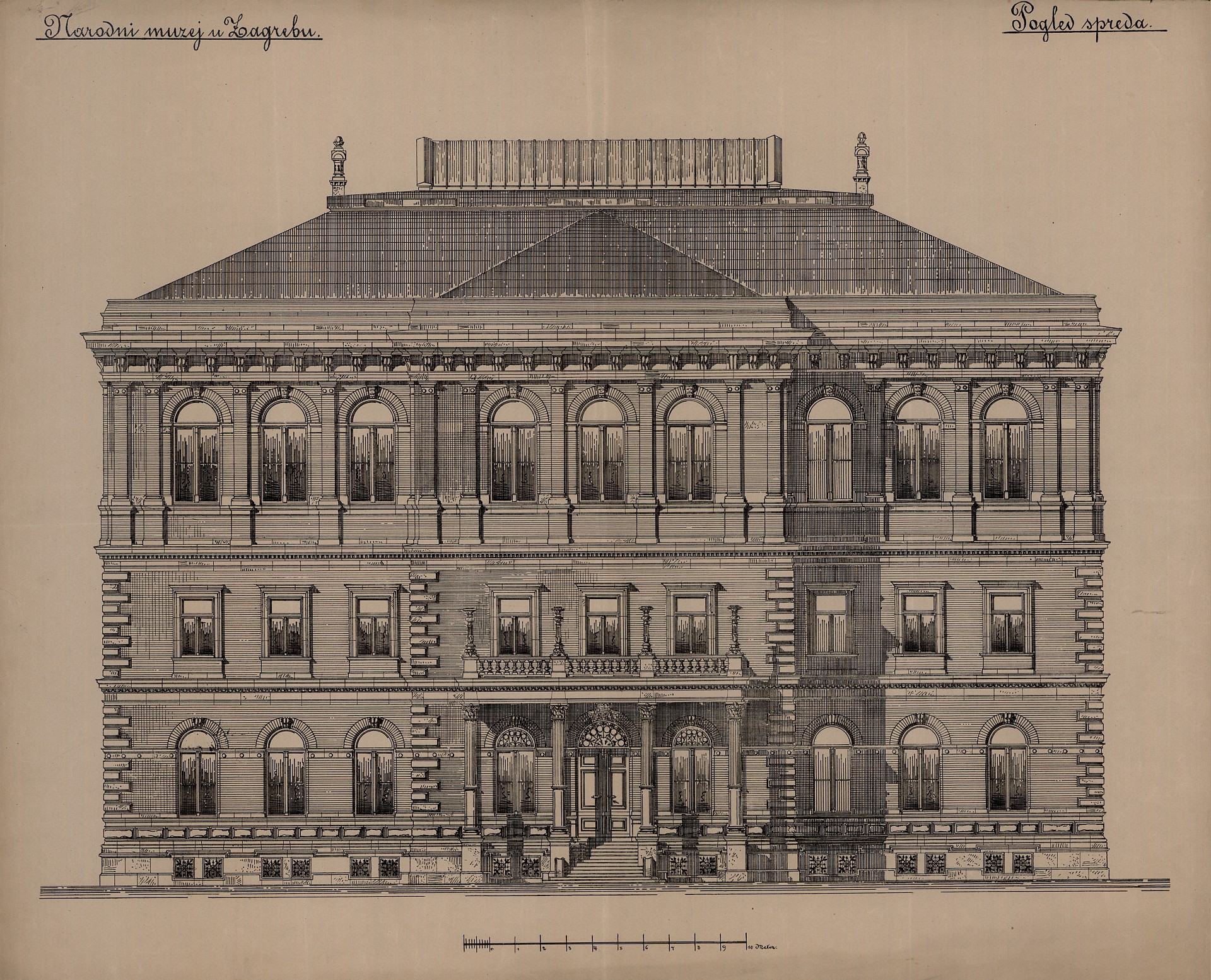
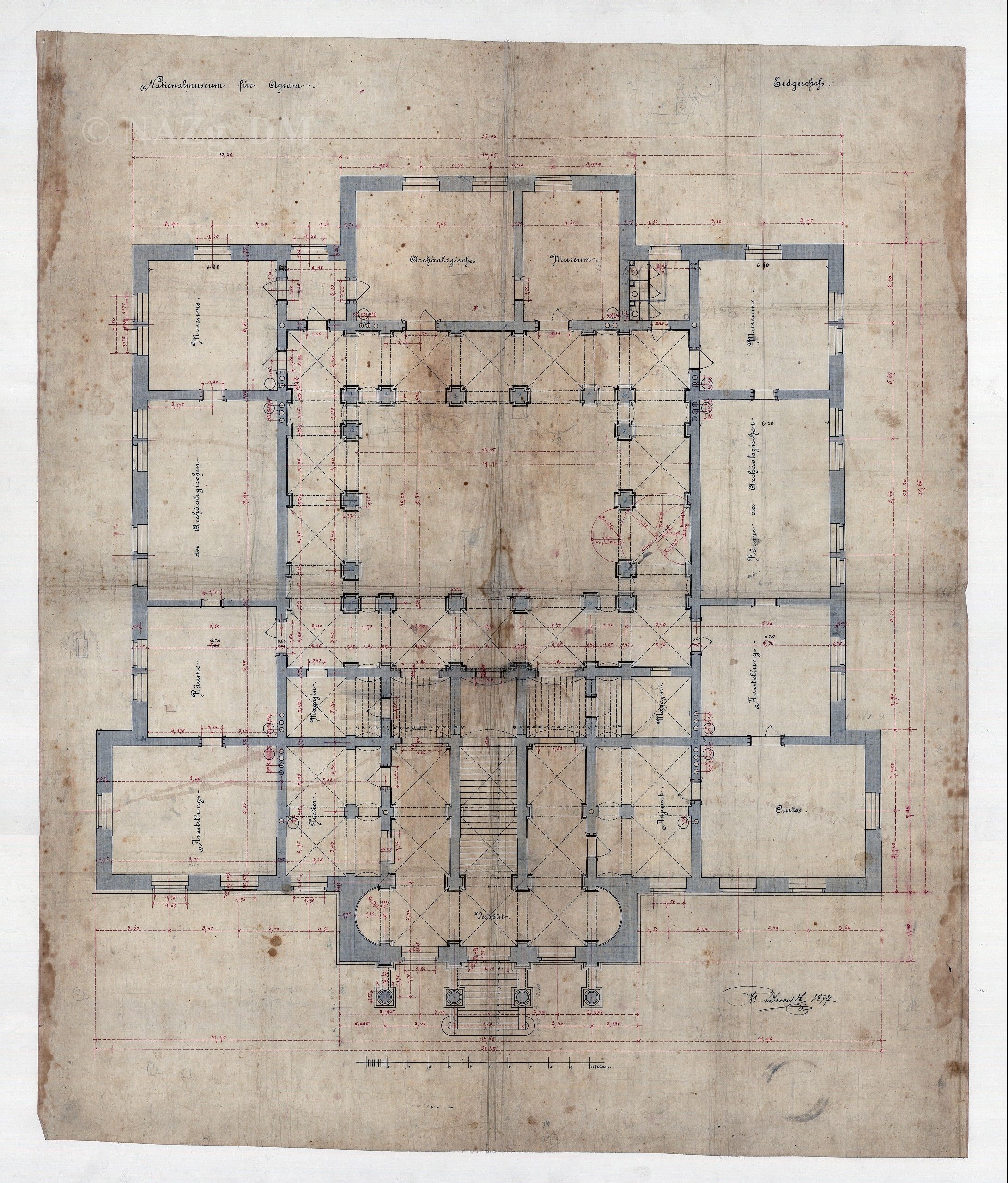
The creation of the new design led to the rise of building costs: the first cost estimate foresaw a large sum of almost 230 000 forints, without even including the costs of painting, a sewage system, and other municipal infrastructure, or administrative taxes. By the final completion and decoration of the palace before its grand opening in 1884, these costs would be surpassed by an additional almost 25 000 forints, including repairs after the earthquake. Strossmayer’s initial financial injection rose to almost one fifth of its initial value due to interest rates, to which the Bishop added a sizeable amount rounded up to 20.000 forints. With his subsequent smaller contribution for the final decoration of the palace’s interior, his total donation amounted to 62.000 forints. An approximately similar amount was gathered from two loans taken by the Academy. From the considerable 100.000 forints provided by the Provincial Government, 80.000 was designated for the cession of the National Home Palace building, while the rest was from the Museum Foundation. The total expense was also settled thanks to smaller individual donations, which amounted to over 10.000 forints, as well as various interest rates and monetary balancing.
In his final version of the design, and according to the comments of the various stakeholders, Schmidt corrected the width of the entire structure and the height of the ground floor. In the Gallery section he included roof lighting, and he designed the attic as a space for painting. He also maximally reduced the decorations on the main façade. It should be mentioned in this context that Kršnjavi was fully involved in the consideration of the aesthetic and functional aspects of the different solutions, ever since the initial plans to transfer the Bishop’s collection to Zagreb. Once the construction of an entirely new building started to be considered for the collection, his correspondence with Rački became infused with an exchange of ideas in the attempt to outline an architectural program, as well as to create rooms with specific purposes for the future building. Kršnjavi was not entirely satisfied with the final solution in terms of the building’s proportions and arrangement of windows, and was especially opposed to the staircase that led from the ground floor to the first floor. Namely, because of the demand to spatially separate the Archaeological Department from the other institutions which the building would house, the staircase received an unusual design, which inhibited an unobstructed view of the atrium, making the climb sudden and too steep.
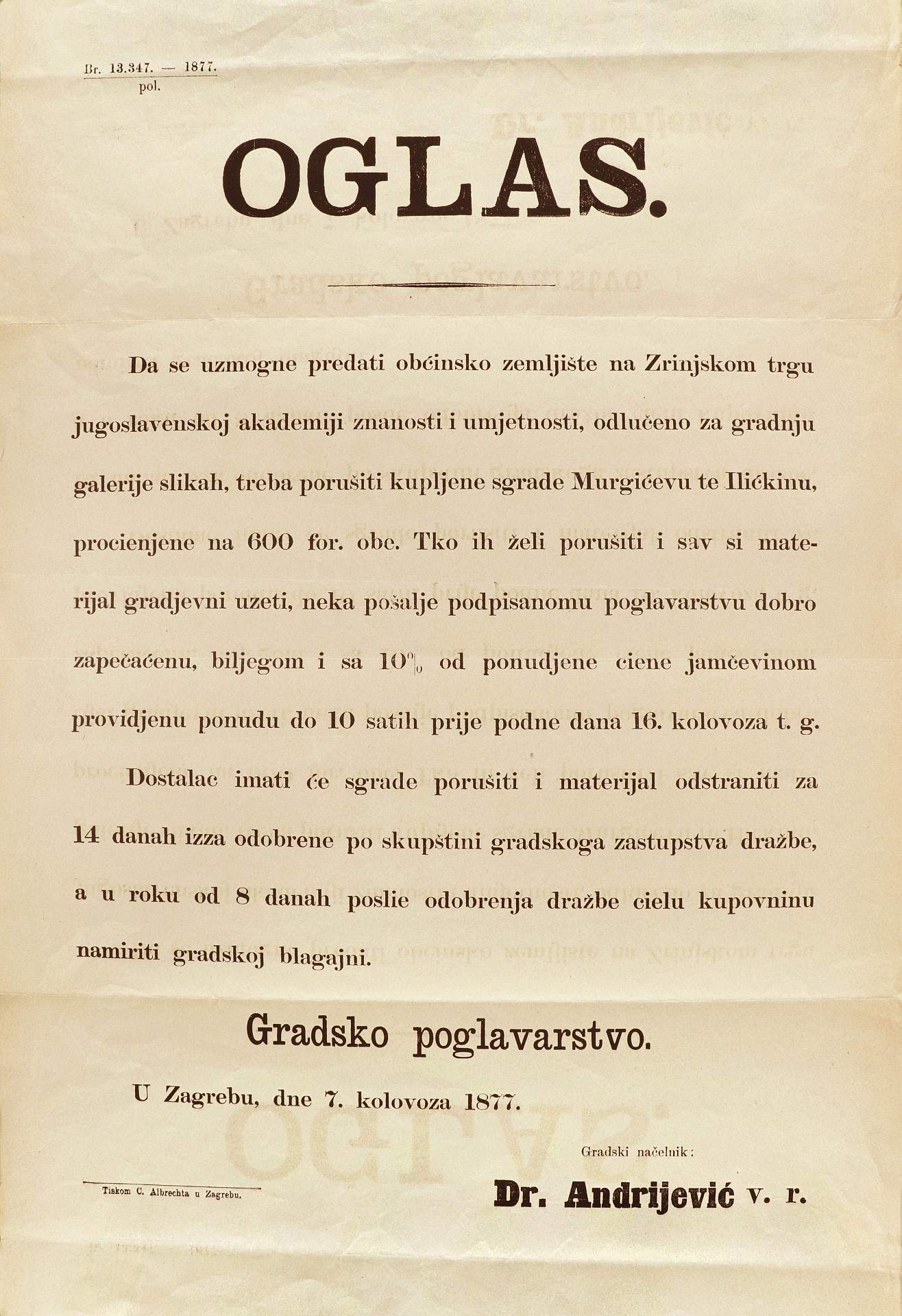
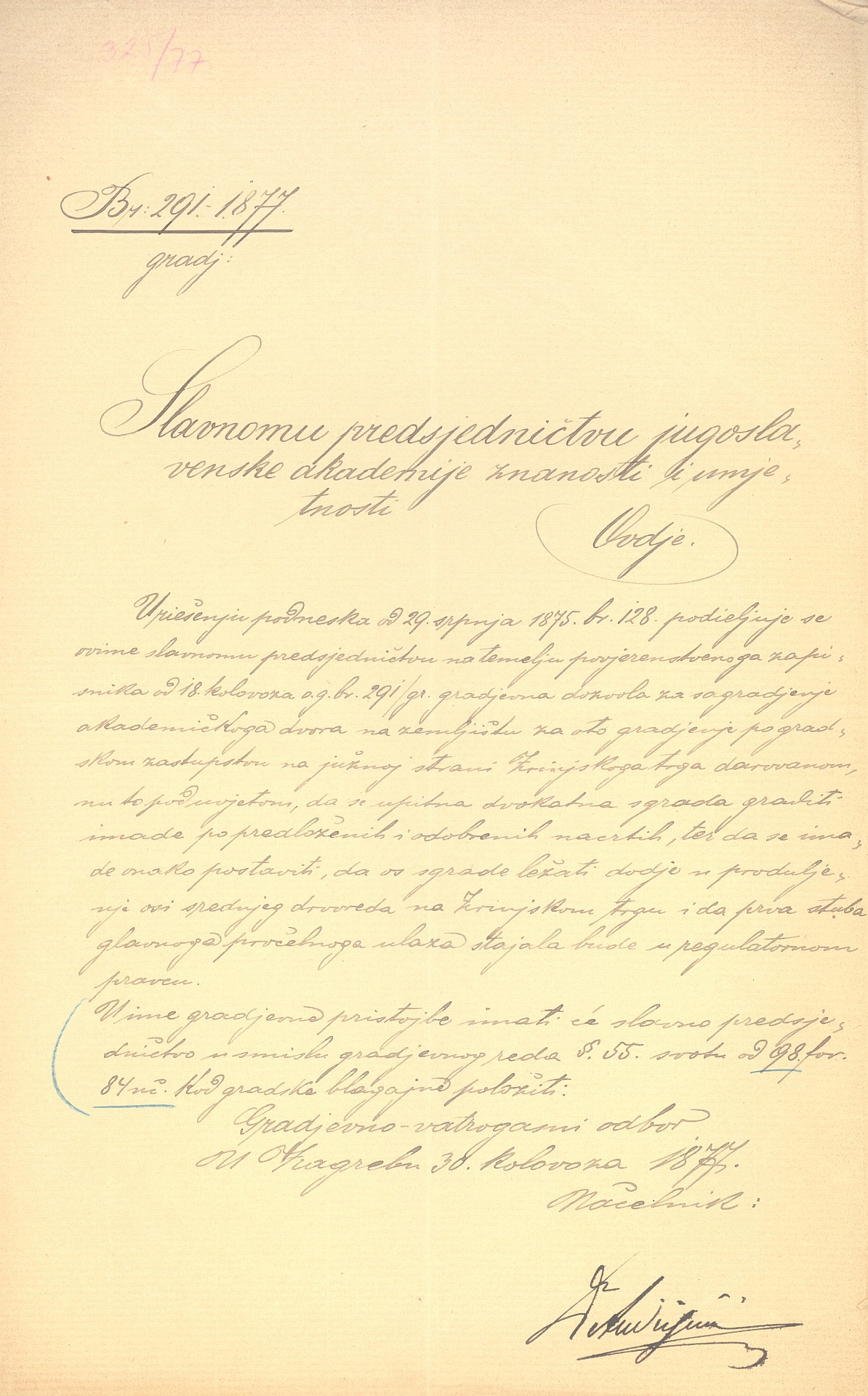
No. 291/structure 1877
To the esteemed Presidency of the Yugoslav Academy of Sciences and Arts here.
By settlement of the petition from 29th July 1875, no. 128, and on the basis of this committee’s conclusions from 18th August of this year, the esteemed Presidency is hereby granted the construction permit no. 291/gr. for the erection of the Academy’s palace on the construction site on the south side of Zrinski Square, allocated for this purpose by the City Assembly, on the condition that the two-story building in question be erected according to the proposed and accepted design, that it be placed in such a way that its axis be an extension of the central tree line of Zrinski Square, and that the first step of its main entrance be placed according to valid regulations.
The esteemed Presidency will have to pay a construction fee according to construction regulations §. 55, in the amount of 98 for. 84 nč. to the city treasury. The Construction and Firefighting Committee.
In Zagreb, 30th August 1877. Commissioner: Dr. Andrijević(transcript of the Construction permit for the Academy Palace, 30th August 1877)
Construction on the neo-renaissance palace began in August of 1877. Main oversight was entrusted to Schmidt, while city surveyor Melkus was appointed his second-in-command. Franjo Vonderka was hired as the construction site manager. We should not fail to mention the contribution of architect Herman Bollé, who, as Schmidt’s assistant, was more immediately involved in the work that the Viennese studio conducted in Croatia. Bollé was also involved in the creation of the architectural project itself: judging from archival evidence, he developed Schmidt’s idea in detail, which is why he was sent to Rome at the beginning of 1876 in order to study the local renaissance architecture.
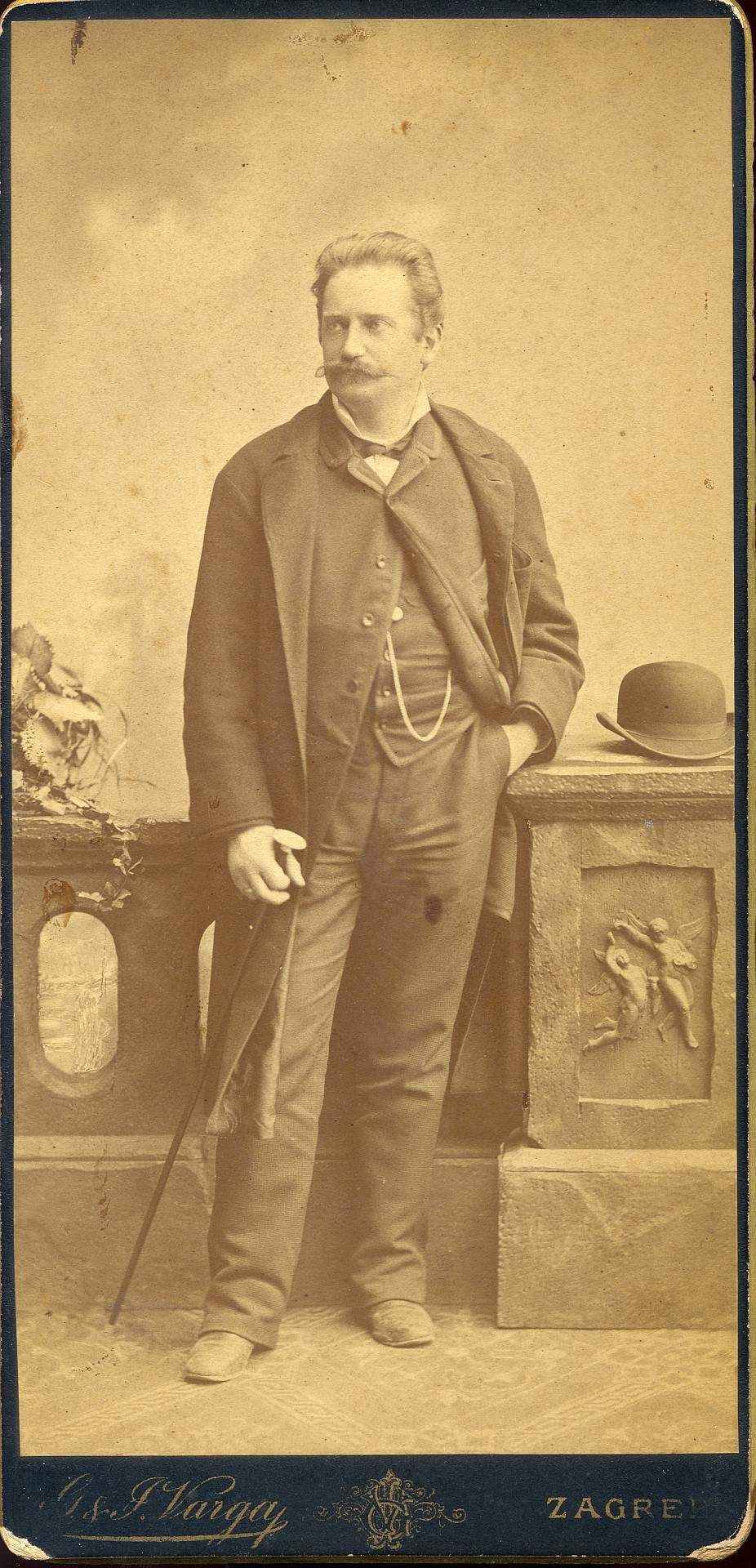
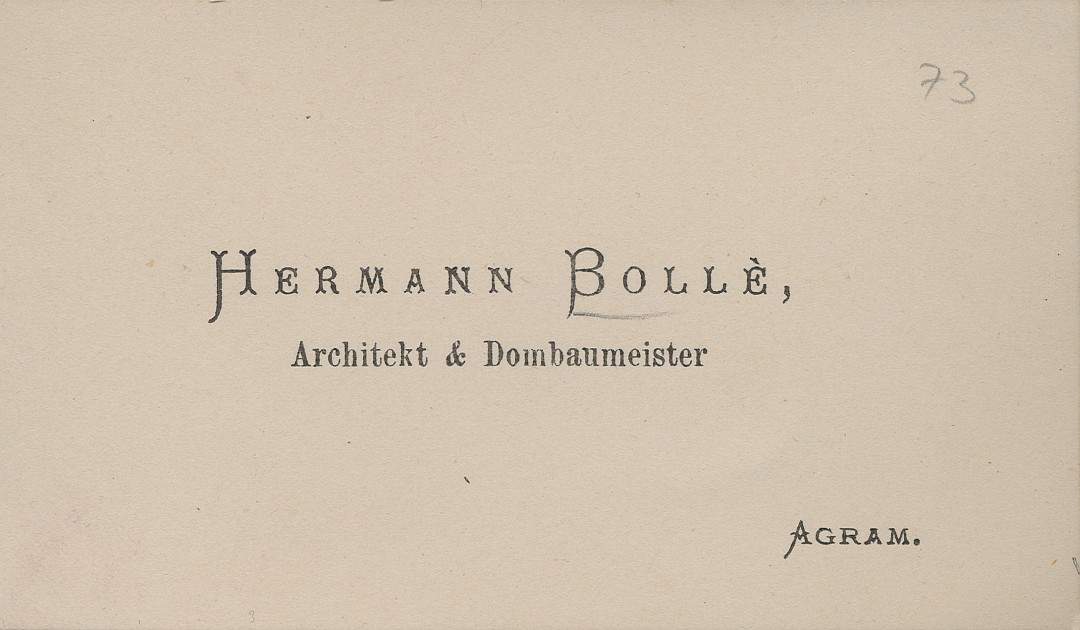
With some objections from the Provincial Government, who insisted that the Academy and Archaeological Museum be moved from the National Home Palace as soon as possible, construction on the palace stalled several times, primarily due to issues of acquiring construction material of the proper quality and quantity. Facing bricks were acquired in the brickworks Grahor and Klein in Sveta Klara, and in Drasche brickworks in Vienna, from where they were transported by train.
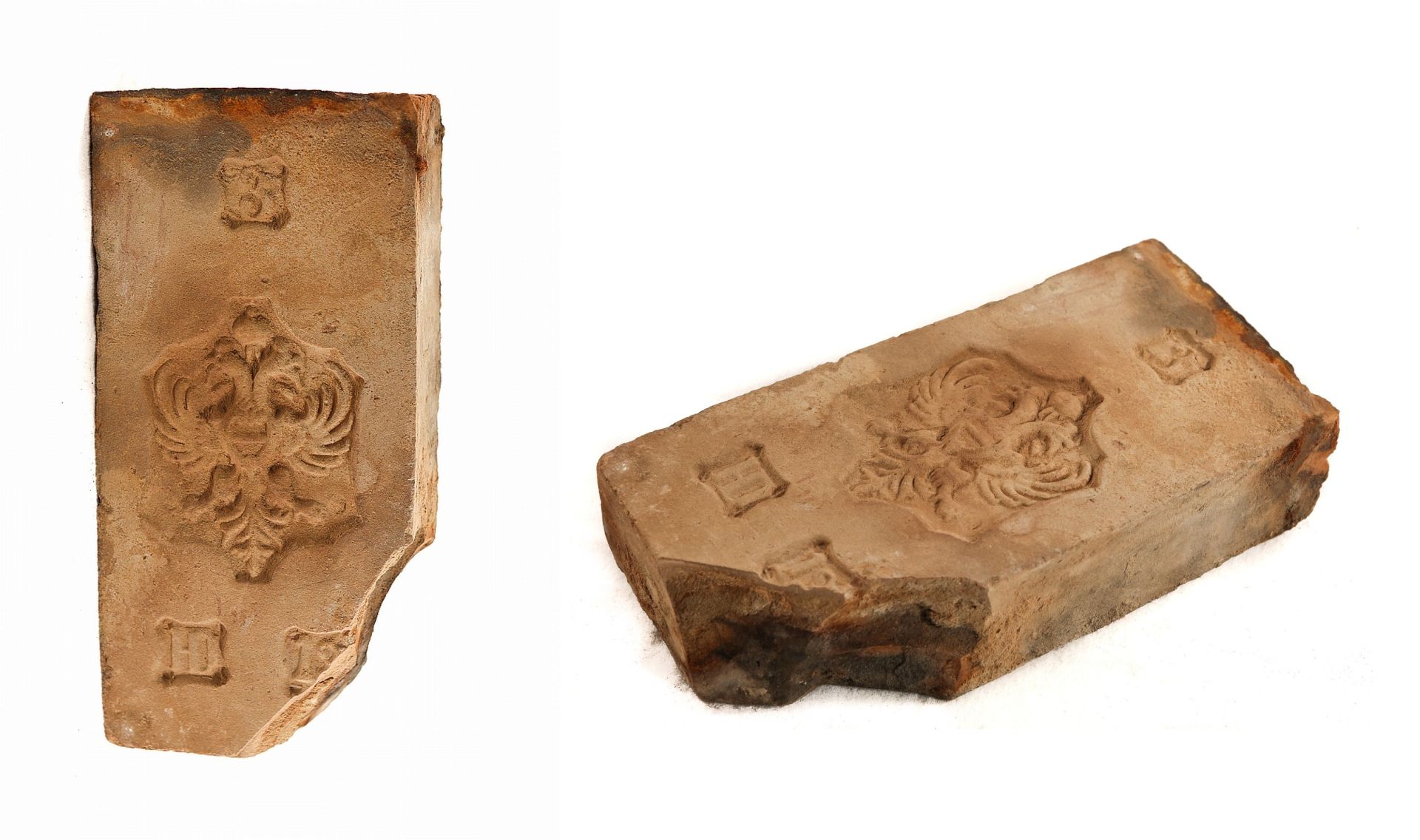
By the end of 1879 the palace received its roof, and other parts of the construction that could be conducted during the winter months continued. During his visit to the construction site at the beginning of September, Schmidt expressed the opinion that “activities in the interior” should be postponed “until early spring, when the building will be mostly dry and the work transitioning into purposes of art”. By the end of the following summer, the building was completely finished. After the ground and first floor were paved in mid-August, the Archaeological Museum and Academy were moved in.
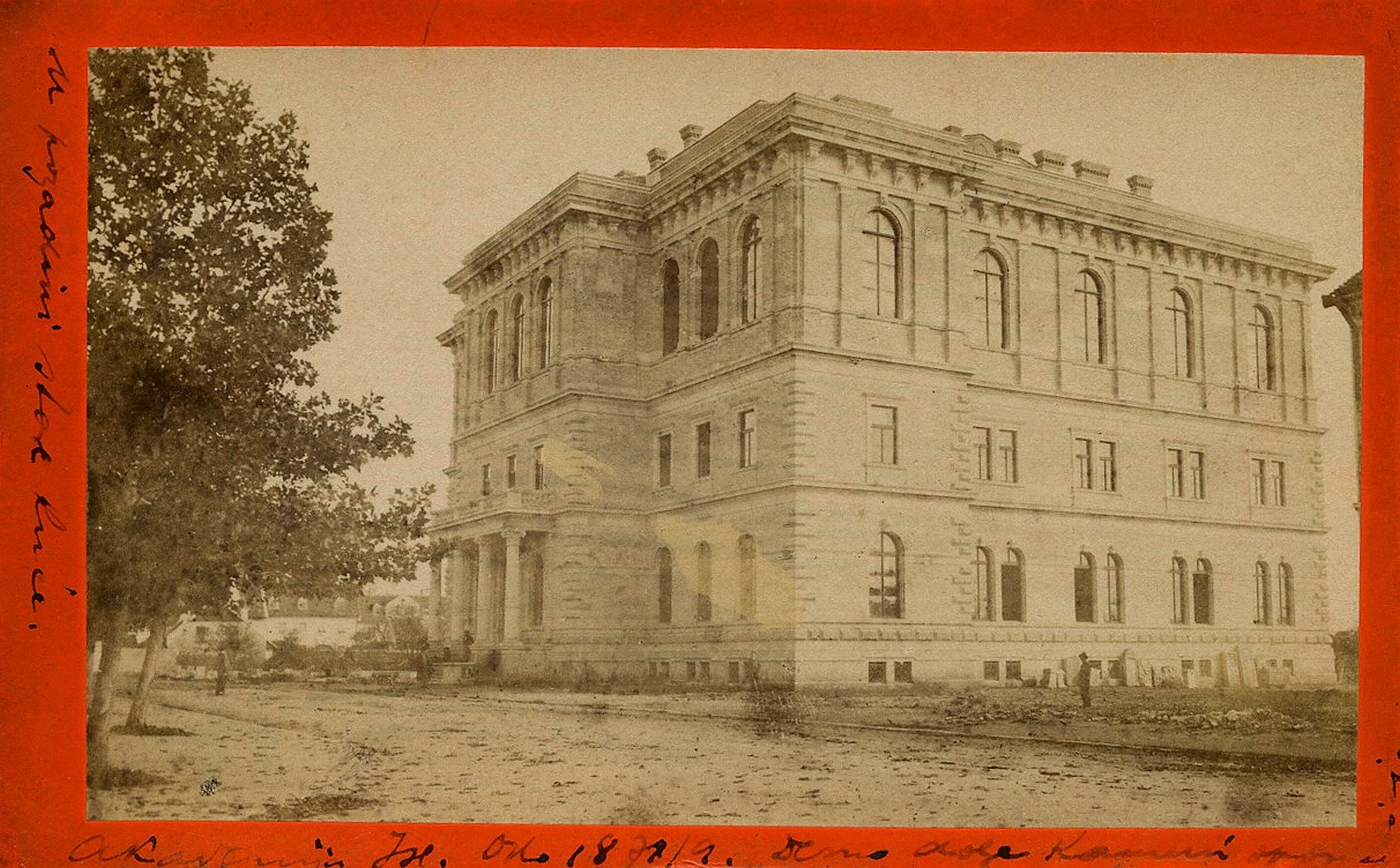
Following every step of the construction process, Kršnjavi devoted himself to thinking about the decoration of the Gallery’s interior. In this effort, he consulted leading experts at the time, taking into consideration the principles of exhibiting, the color of the walls, the lighting, and the positioning of doors with respect to the windows.
The earthquake that shook Zagreb on 9th November 1880 postponed the planned decoration of the space that was to house Strossmayer’s collection: the city’s buildings were heavily damaged, including the newly built Academy Palace, although its damage was mostly in the interior, while the façades made of facing brick suffered very little damage. The restoration, as well as the final decoration of the Gallery and archways, was to be funded by a loan from the Provincial Government from funds allocated for repairing damage caused by the earthquake. The King and Emperor, Francis Joseph I, Bishop Strossmayer, and Ban Ladislav Pejačević, also made donations for this purpose. [more in the chapter: The Academy and The Great Zagreb Earthquake of 1880]
One of the most beautiful buildings in our glorious city is the palace of the Academy of Sciences on Zrinski Square, an obvious witness to the people’s sacrifice and consciousness. Ever since the unfortunate hand of fate struck Zagreb with such force, we have visited this building several times. The first day showed some damage, but the following days opened up new wounds. Thank the Lord, the building is not demolished, but it is damaged heavily, too heavily even. However, the pillars were left untouched, just like the main walls, but many arches, vaults, and transverse walls are cracked, and the frame of the glass ceiling will have to be seriously repaired. We cannot remain silent on this fact. The construction costs have not even been settled yet, the Academy cannot touch its equity, and its revenue is dedicated to publishing efforts. We can hope that the government will contribute to the reconstruction of this temple of science and art, as it would be a sin to abandon such a beautiful monument of national consciousness. Finally, the Academy has become an institution that is concerned with the entire nation, and the damage suffered by this beautiful palace is felt by all Croatia. On the other hand, the construction of this spiritually important edifice should not cease. We do not know what the general opinion is, but we do know that nothing has been decided yet. Let us also be allowed to say a few words on the subject. Alms are flowing to Zagreb from all corners of Europe, alms for victims of the earthquake. These gifts are naturally aimed primarily at those citizens whose means of existence has been destroyed or heavily damaged. After them, we should think also of public buildings and institutions that were damaged, and whose damage weighs heavy on the people. These institutions are also victims. One newspaper has aptly highlighted that the relief committee was swarmed by maidservants, laborers, and the poor alike, in order to squeeze out even a few forints. As we have seen, these were mostly people who have lost nothing, because they have nothing, and are already supported by the county. But they still brazenly swarmed the town hall, sometimes even using deception. The Lord knows that we are not lacking in compassion, but the world is not sending their alms for those poor people already fed by the Zagreb County, but for those who fell victim to the earthquake. We recommend that the committee take great care and providence in this matter. We ask that it repel these parasites, and think also of our institutions when handing out aid, think of our Academy that is definitely deserving of alms. She is a victim, therefore, she should be helped. This is not a paradox, but the truth. We repeat to the gentlemen in charge of these decisions again, and in this unhappy hour: the people do not live off bread alone. This is the undeniable truth that withstands even the smallest aversion.(“The palace of our academy of sciences and arts”, Vienac, 25th December 1880)
Your Excellency!
May I be allowed by the kindness of Your Excellency to make an appeal on behalf of our academy of sciences and arts. Last year, the Academy completed its beautiful building with great effort and expense. I believe that the archaeological part of the National Museum has already been situated there. Alas, the misfortune of the earthquake that has befallen Zagreb and its surroundings did not take pity on the Academy. By the estimate of architect Bollé, it will take around 12 thousand forints to repair. The Academy does not have this kind of money, as everything it does have is barely begotten, and used to perform those of its tasks most useful for the people.
In this vain, the Academy reached out to the High Government, and I received the honor to make an appeal to Your Excellency, to be so kind as to come to the aid of this incredible institution. The Academy is surely deserving. The Academy and the most useful, most fruitful institution in the country. Its achievements incite the attention of the foreign world, drawing honor and integrity our way. In the start, some people protested, as the academy carries the name Yugoslav. The most radical party in the country still cannot forgive this. On the other hand, I believe that the Academy could do nothing else, if it wanted to become the central scholarly institution of all Slavic branches on our southern tree. Therefore, it is in the interest of the entire Monarchy that there is a hearth in Zagreb, in which the fires of all south Slavic people dance, warming the spirit of education. The politics that brought Hungary to Bosnia and Herzegovina must also approve and support this decision. Therefore, I ask once again most humbly of Your Excellency to take the Academy in this cause under Your wing, and respond to her plea with kindness.
In all else I remain in Your Excellency’s service with the deepest respect, Bishop Strossmayer. In Đakovo on 24th January 1881(transcript of Strossmayer’s letter to Ban Pejačević with an appeal for financial help for the restoration of the Academy building damaged by the earthquake, on 24th January 1881)
In June 1882, the leadership of the Academy informed the Bishop that the building, apart from the “painting decoration in the archways”, was completed, and that there was no impediment to the transfer of paintings. They inquired when Strossmayer was planning to transfer them, since “many decisions that the Academy has to make concerning the interior design of the halls in which the paintings will be displayed depend on the answer to this question”.
Glorious Academy of Sciences and Arts in Zagreb.
It is my wish that the collection of my paintings be promptly transferred to Zagreb, making the Academy, and through it the people, its true owner. The transfer of the paintings could start right after the consecration of my church, which will happen on 8th September of this year. Moreover, if possible, some paintings can be transferred even sooner: all cardboards by Overboek, which represent one of the most valuable types of art, and will be a special adornment to our collection. Among the paintings that can be transferred even now are those that are currently on the floor, as there is no place for them on the walls. In order to do things the right way, I would ask the glorious Academy to put the task to Mr. Kršnjavi, in whom I have the greatest trust. Of course, I take upon myself the expense of the transfer, so that the Academy need not worry on this account. I trust in the competence of Mr. Kršnjavi to do everything as it should be done, so that no harm comes to the paintings, and that the expenses are kept to a minimum. I am not sure if it would be possible to speak to the railway society on the subject, and ask if they could lower the rate somewhat for such a noble cause. bApart from this, I would like an expert to be brought to the Academy building for this occasion, who can divide everything according to the various schools and styles, so that the display be useful to the general public even from an outside view. For this purpose, I again believe Mr. Kršnjavi to be most competent. He could also be curator of the collection, and its interpreter as needed. Otherwise, the collection would simply be a dead letter. The collection should also be added to from time to time; paintings that are damaged should be restored by a prominent restorer so that they are truly repaired, and not ruined. For these and similar activities, I again believe that the most competent and most conscientious person would be Mr. Kršnjavi. Of course, the conditions for all of this will be arranged by the glorious Academy; mine is only to express my wishes and opinions.
With this I forfeit the thing that is most valuable to me – but I make this sacrifice happily for the love of the people. Thank God, I have already reached the years I could have hoped for with my poor health; now I am inclined towards peace and rest, and this forfeit and sacrifice I hold to be my best and most practical testament. Therefore, God bless the Academy and all our people! Multiply, God willing, and may He deliver to our people the mental and spiritual strength to overcome all obstacles that divert from the sublime purpose to which they are called and committed by the providence of Our Lord!
In all else I remain with the highest regard our Glorious Academy’s humble servant, J. J. Strossmayer, Bishop and patron of the Academy.
In Đakovo on 1st July 1882
(transcript of Bishop Strossmayer’s reply to the Academy’s letter from June)
In his reply to the Academy’s letter from June, Strossmayer expressed his willingness to begin transferring the paintings to Zagreb, at his cost, after the consecration of the Cathedral in Đakovo planned for 8th September. The Bishop also recommends Izidor Kršnjavi as the ideal “expert” who would arrange the paintings throughout the Gallery according to painting schools, and in such a way “that the display be useful to the general public even from an outside view”; he also sees Kršnjavi as the Gallery’s curator, and commends his knowledge of art restoration.
However, in the fall Strossmayer expressed his concern several times that the paintings could be damaged during transportation in rainy weather. Furthermore, on 23rd September of the same year, the bridge over the Drava River in Osijek collapsed, which further spoiled the plans to transfer the paintings to Zagreb.
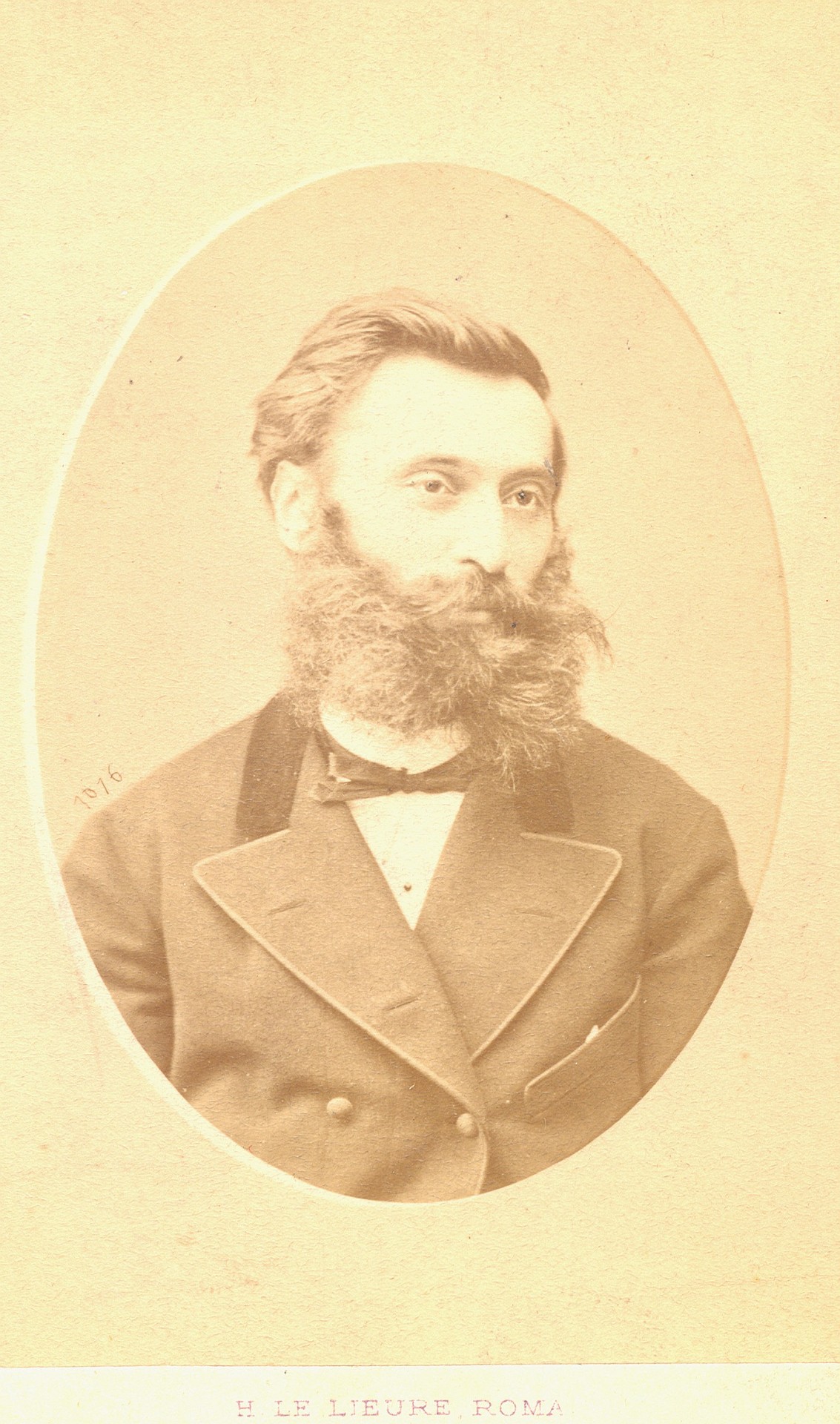
At the Academy’s session held on 15th January 1883, Kršnjavi was named “director of the art collections for a period of five years”, despite some opposition. In view of the decision “to draft a statute that would determine the relationship between the director and the Academy” as soon as possible, the very next session, held on 27th February, saw the approval of the “Rules for the Academy’s Strossmayer Gallery”, which noted that “the Gallery is managed by the Academy via its Board of four representatives and the director they appoint”.
Based on your replies from 10th October and 16th November 1882, as well as on our letter from 20th October of last year, no. 214, you are hereby informed, esteemed Professor, that the Yugoslav Academy of Sciences and Arts has chosen You to be the director of its collections of paintings and artworks during its joint session held on 15th January of this year, and this for a period of five years and an annual fee of three hundred (300) forints, which will be paid in two semi-annual installments. For Your information, if the Gallery were to send You somewhere on its behalf, the Academy would pay Your travel expenses in full; also, it will cover all flat-rate fees and other expenses that the Gallery requires. Furthermore, a janitor or other person would be hired and fired for the Gallery at Your suggestion, if necessary. The occupation of director will not hinder Your vacation time during the holidays, to which You have the right as a university professor; likewise, you will not mind if the Provincial Government gave You a shorter or longer leave for educational purposes. The only requirement in these circumstances will be that we decide in advance, by mutual agreement, what is necessary and appropriate for the Gallery during Your time of absence. We will jointly designate a room within the Gallery that will serve as Your office.
In all else, Your relationship with the Academy will be a reflection of Your duties noted in the attached rules, which You are receiving for the sake transparency and professional conduct.
You will arrange with the President of the Academy the start of Your duties as director of the Gallery, and determine when You can take over the artworks that our excellent patron has given us.
In Zagreb on 29th March 1883.
The Yugoslav Academy of Sciences and Arts
Dr. Fr. Rački President
Dr. B. Šulek Secretary.(transcript of the notice on the appointment of Kršnjavi as director of the collections of paintings and artworks of the Yugoslav Academy, 29th March 1883)
In June 1883, the first forty or so crates with artworks were transferred to the Gallery from Đakovo, followed by the remaining fifty the following month. Kršnjavi took the crates over according to a list compiled by Strossmayer’s secretary Cepelić. The list included 284 entries, some of which were accompanied by the note “delivered to the Museum of Arts and Crafts”. [more in the chapter: The transfer of artworks from Đakovo in the summer of 1883]
[…] Now the crates are being opened, and so far, not a single painting has been damaged, not even the slightest. Once all of the paintings are taken out, which will be in two days exactly, Kršnjavi and Bollé will design the scaffolding, which will be made by a carpenter. We have already sent the cargo lists to the management of the Royal Hungarian Railways, so that they may calculate the transport cost with the other railways and reimburse our expenses. The transport cost for the paintings from Vrpolje to Zagreb is 654 for. 78 nč. The decoration of the Gallery will cost the Academy a pretty penny. Thankfully, I have managed to save up to 2.000 forints over the last years without detriment to science, but that amount will not be sufficient. […] (Rački to Strossmayer, Zagreb, 21st July 1883. From: Rački-Strossmayer correspondence, letter no. 789)
At the end of January 1884, the scaffolding was being set up in the halls. The design for the wooden scaffolding was made by Bollé according to Kršnjavi’s instructions.
The scaffolding for the placement of paintings in the Academy palace is already finished, and will be set from Monday onwards. We start in the great hall and continue from there. Painting will begin immediately; we hope that the entire scaffolding will be set by the end of February; the paintings will then be hung directly. The scaffolding was built according to the newest fashion, which has been accepted in the most beautifully decorated galleries. Once the Gallery is completely decorated, which will be by spring, we will have a grand opening. […](from: “Scaffolding for the placement of paintings“, Pozor, 26th January 1884)
Placement of the paintings started in May, and Kršnjavi wrote a letter to Strossmayer early in the month saying that the first painting hung in the Gallery was The Crowning of the Madonna, then attributed to Paris Bordone. Approximately at the same time, scaffolding was being set in the atrium and hallways that would be used to paint the walls. According to press articles at the time, the scaffolding reached all the way to the glass roof of the palace. The painting decoration was executed according to Bollé’s design by his permanent associate, Danish painter-decorator Johannes Clausen. [more in the chapter: Decorative wall painting in the Academy Palace at the time of its consecration]
Those who walked by Zrinski Square these days could notice carts carrying beams, heading towards the Academy Palace. And those who climbed the Academy’s steps could see the scaffolding being set as high as the glass roof and in throughout the hallways. The scaffolding will serve painters in their effort to paint the walls of the atrium and archways. Painting was not forgotten during the building’s construction; but, first we had to pay the cost of construction, which meant that painting was postponed for another day. And who knows when this day would come had it not been for the generous hand of the Academy’s supporter and our patron, Bishop J. J. Strossmayer, who gave the academy 2.000 forints for painting in order to enable the completion of the building whose construction he had initiated. And so, in the next few days we will commence with the wall painting according to the design of architect H. Bollé, and by the hand of painter Klausen, who had also executed the decorations in the seminary chapel and in the local orthodox church; he is currently working on the sacristy of our cathedral, and will paint the church itself. – At the same time, the Gallery’s director, prof. dr. Kršnjavi, started to arrange the painting collection as the scaffolding was set. Those who have seen the scaffolding praise the tasteful work according to Bollé’s design. Several paintings have already been hung in the halls dedicated to the Venetian and new schools. And so, the painting of the walls and the hanging of the paintings will progress simultaneously, and will both be finished by July. With this, the opening of the Gallery, which was planned for the month of May, has been postponed; but it will be all the grander as the building itself will be completely painted and finished. These activities were joined this spring by the arrangement of the gardens surrounding the Academy Palace, which will make it more beautiful; and there is hope that a beautiful statue of Saint George will be placed in the gardens during this summer. In this way, through its architecture, the artistic value of its collection of paintings, and the natural charm of its gardens, the Academy Palace will ennoble the aesthetic sensibility, spread good taste, and raise the education of the citizens of our capital, and through them our entire nation.(“Activities in the Academy Palace“, Pozor, 10th May 1884)
At the end of October, the newspapers reported that the decorative painting of the palace walls has been completed, and that the building is ready for a grand opening. The central wall of the second-floor stairway holds a commemorative plaque made of Carrara marble.
(The Academy Palace) is now completely dressed and ready to receive guests, who will arrive to participate in the grand opening of the gallery of paintings. The painter Clausen has put the fine finishing on all of the halls and stairways, which his work will grace for as long as the Academy’s resources allow, for as long as the stone can be filled with hand-painted frescoes such as those made by Saič, who had decorated Đakovo’s temple so gloriously. The stairway wall on the second floor carries a plaque made of Carrara marble with the following text:
“During the rule of Franz Joseph I and Ban Ivan Mažuranić, in the time of the Academy’s patron J. J. Strosmayer and its president Franjo Rački, in the month of October 1877, construction started on the Academy Palace according to the design by chief construction consultant, Fridrich Schmidt, and was happily completed three years later with the generous support of the patron, country, City of Zagreb, and other patriots.” […] (from: The Academy Palace”, Pozor, 28th October 1884)
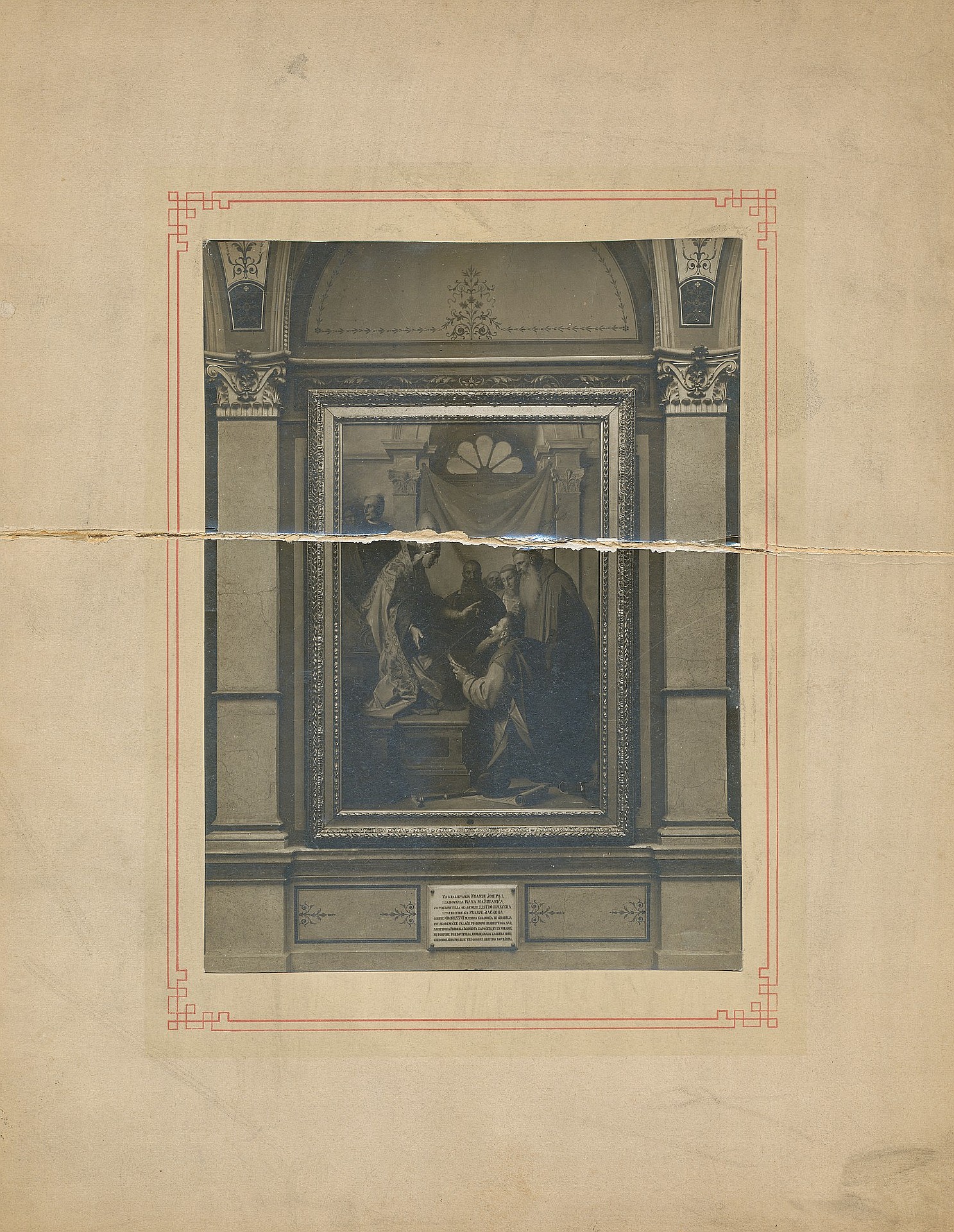
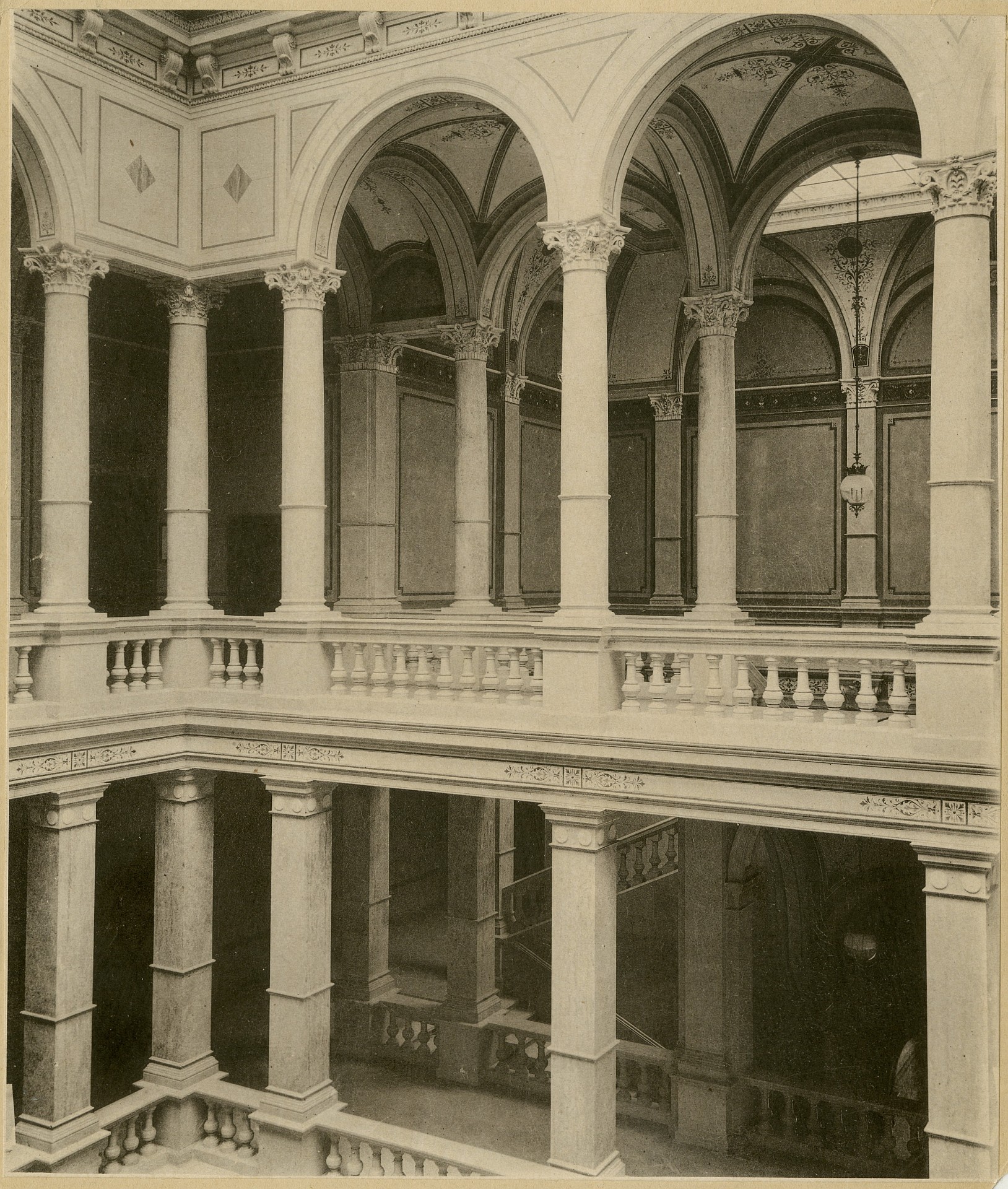
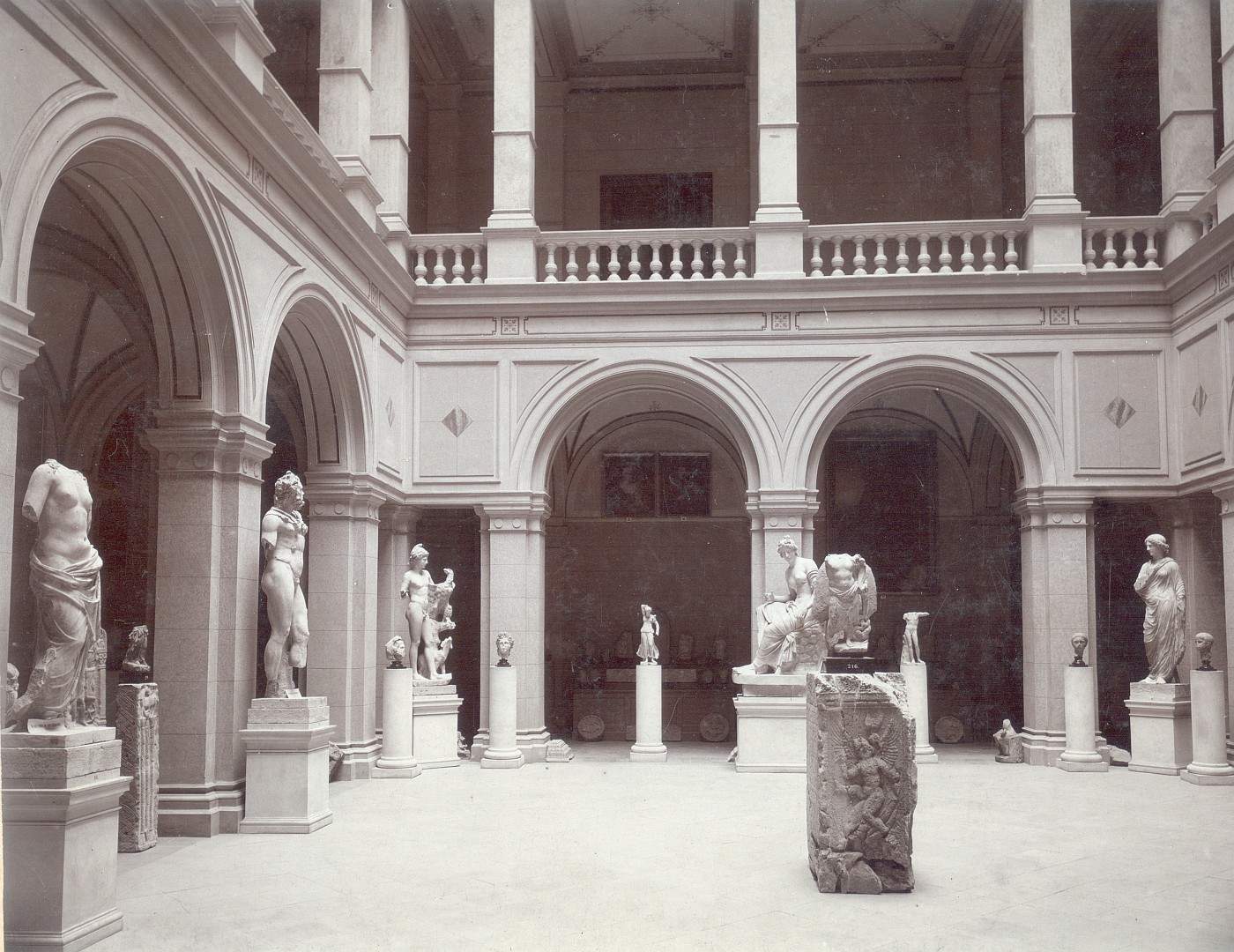
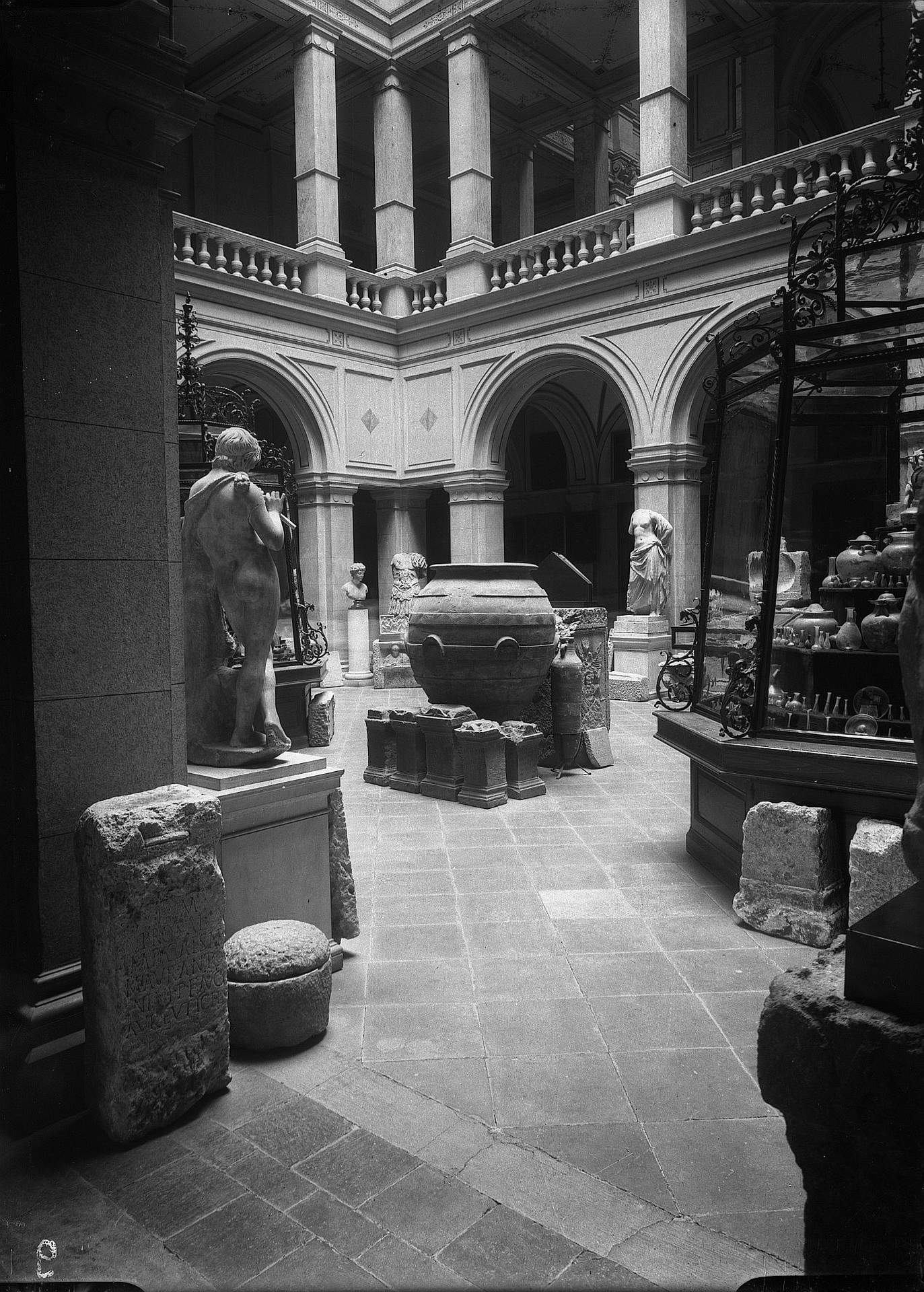
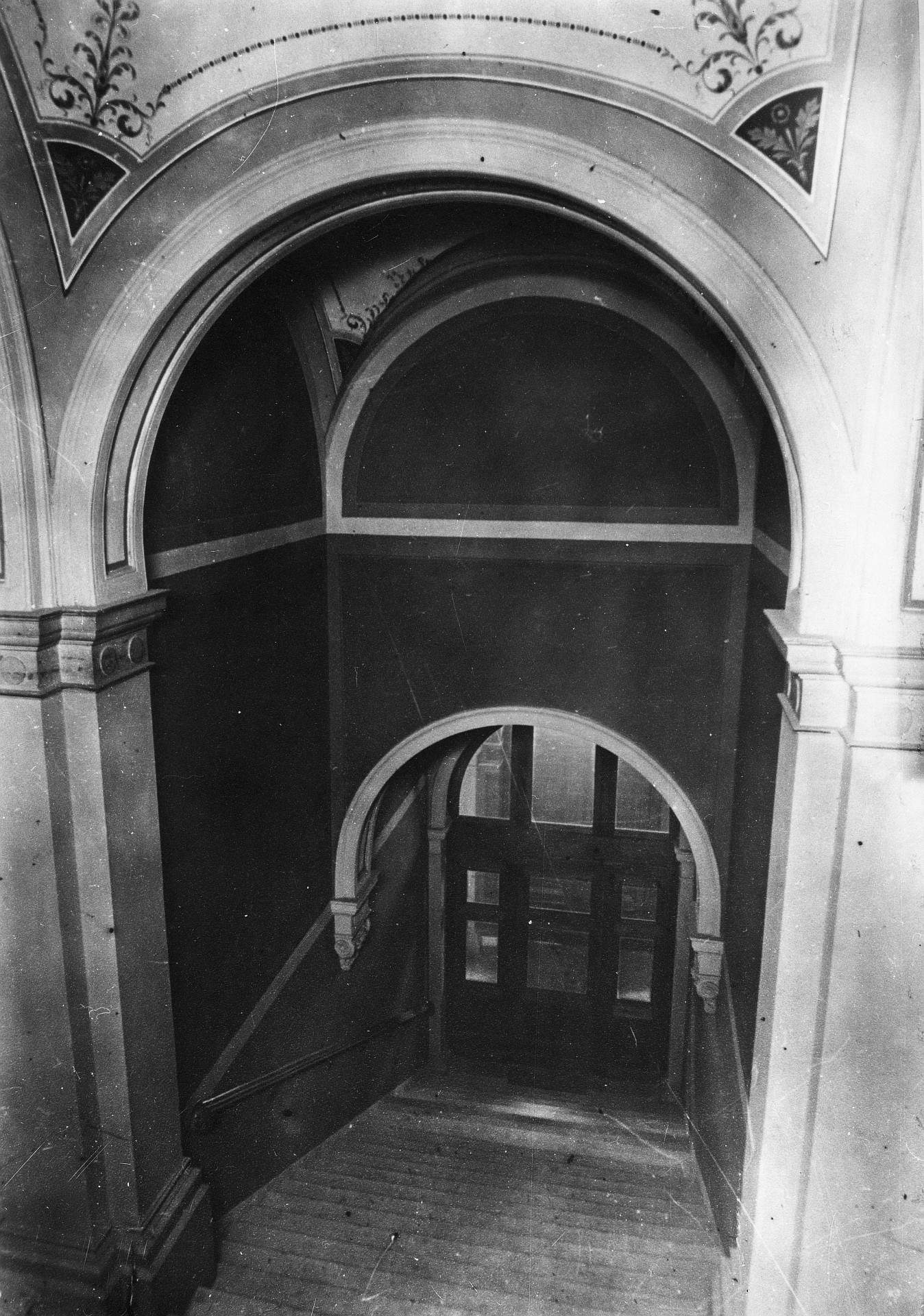
The appearance of the Gallery’s initial display can only be guessed at from written sources, as no visual evidence has been preserved. Kršnjavi, helped by his young apprentice Ćiro Truhelka, arranged the artworks according to period and art schools, through 12 units organized by separating some six halls by parapet partitions.
[…] The paintings have been positioned on transverse scaffolding; this way they receive much better lighting, and the hanging planes for the paintings are larger and much more appropriate than walls. This method is completely original, and everyone will agree that it is also appropriate and elegant. […] Dr. Kršnjavi has been tasked with a heavy assignment, to arrange if possible, the paintings according to schools, which represent the gradual evolution of the art of painting, starting from byzantine and ending with modern artists. […](from: „Strossmayer’s gallery of paintings”, Vienac, 8th November 1884)
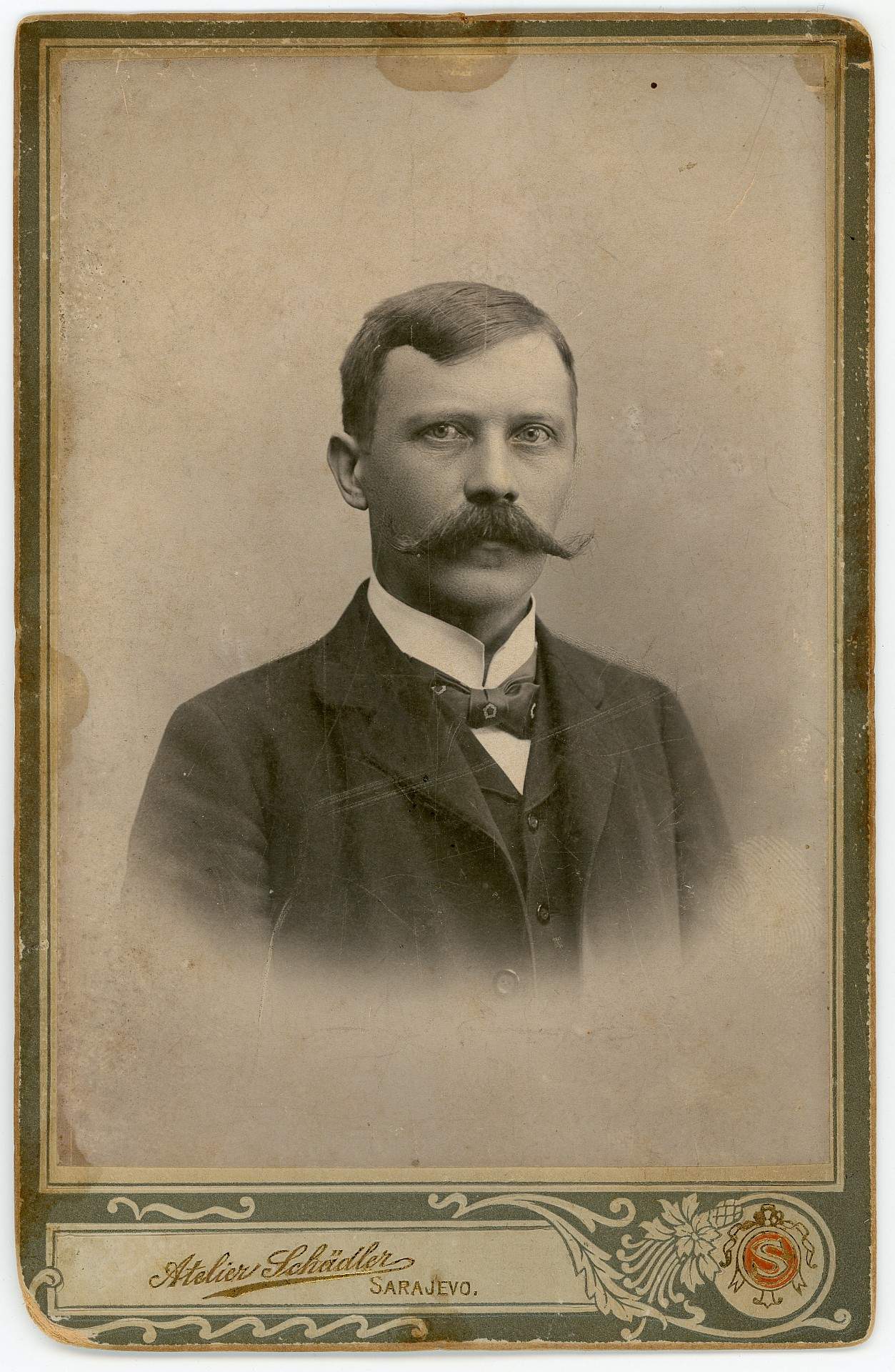
The Academy Palace was consecrated, and its Gallery ceremoniously opened, on the anniversary of the great earthquake of 1884. On this occasion, Truhelka published an article in the daily paper Pozor, along with several feuilletons in the weekly Vienac. It was not until the following year that the catalogue of the Gallery’s collection was published. The preface to the booklet says that Kršnjavi “on the basis of the documentation given to the Gallery by its esteemed patron, entrusted Ćiro Truhelka to create this description, which he then inspected and approved himself.” Although he was still the Gallery’s director, Kršnjavi had not been in Strossmayer’s good graces for some time. After a longer period of political disagreement, the two had definitively parted ways soon after the artworks arrived from Đakovo. The scale of their mutual animosity is best illustrated by the correspondence between Strossmayer and Rački from October 1884, in which they, after Kršnjavi was chosen as a pro-Hungarian representative in Parliament, wanted to avoid an official speech by him at the planned grand opening at all costs. Some twenty years later, Kršnjavi acrimoniously noted that he was not invited to the ceremony; moreover, he was not even officially informed of it. He maintained that his meeting with Strossmayer on the occasion was their “final goodbye”.
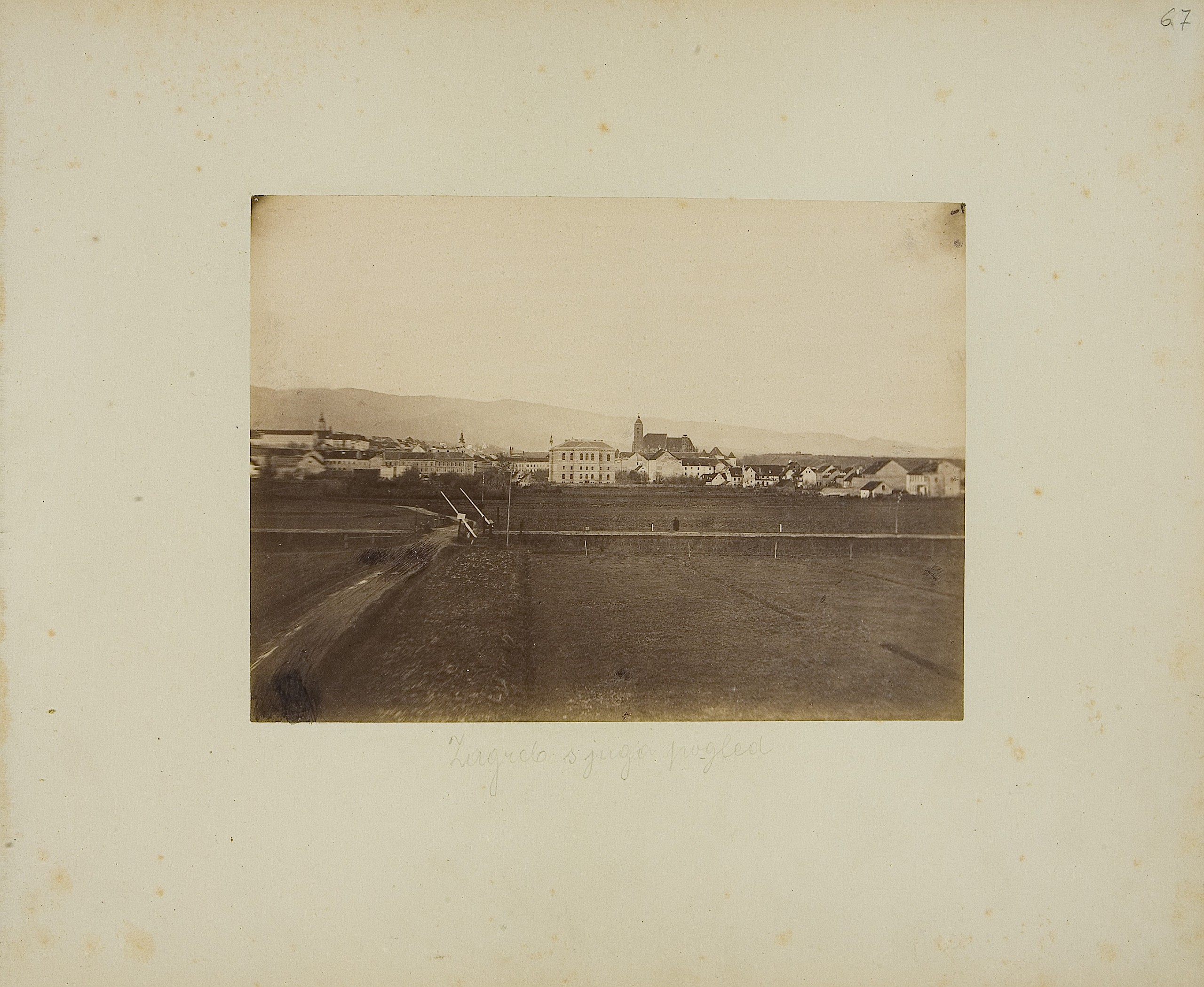
Apart from its symbolic meaning, the newly built Palace is also significant as an architectural exemplar, and an urbanistic marker. Its construction on a location south of the park on Zrinski square inspired the formation of the new, Academy Square, whose final form will depend on the 1883/84 construction of the Chemical Laboratory, located on the opposite side. At the beginning of May 1884, the newspapers reported that the spring saw the decoration of the park surrounding the Palace, and that “there is hope” for the statue of Saint George by Fernkorn being placed there in the summer. The statue was a gift to the Academy from Archbishop Mihalović. The Academy then gave it to the City of Zagreb under the condition that it be placed in the center of the new square. By the end of the month, all walkways and green areas in-between were arranged, and all the local and exotic plants planted. It is interesting that thanks to the city representative Kalabar, the new park received rhododendrons and azaleas from Belgium. The statue was, indeed, placed in the square during the summer, but this was followed by its extensive restoration, which would last until October. The statue was surrounded by a round platform with geometric plantations. Immediately before the celebrations in November, the newspapers reported that the roundel was enveloped by a tasteful iron fence, painted dark green and “bronzed”, which was necessary in order to protect the plants from “evil hands” and dogs.
